European cars are made for long trips, right? The Autobahn, cruising between countries in a single day – it’s the stuff that so many Euro cars are designed for. So with a return 600km drive from Auckland to Wellington, what better way to do it than in a Citroen C5 PHEV?
We racked up 1,000km in our test of the new C5 PHEV to see if it’s worthy of a long-distance tourer as well as a Daily Driver.
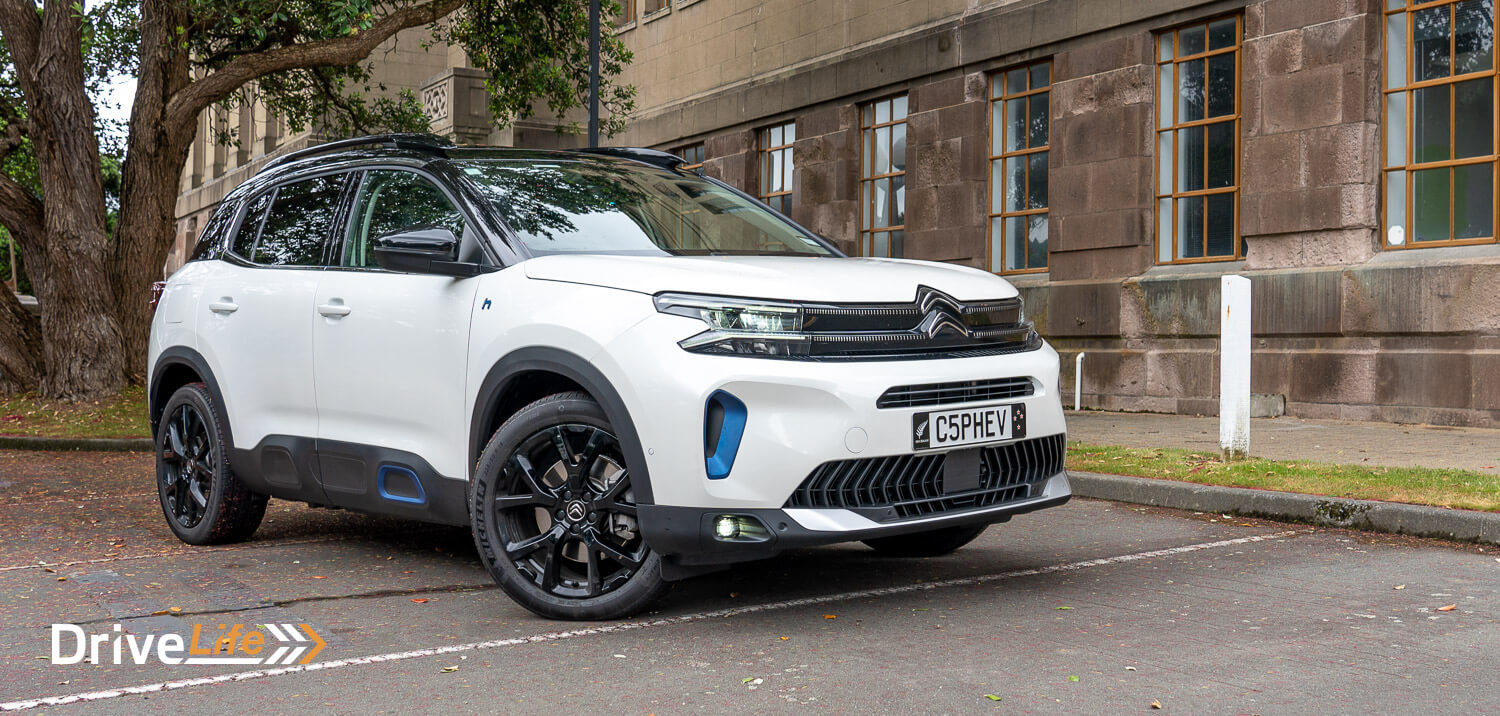
What We Like and Dislike About The 2022 Citroen C5 Aircross Hybrid
| What we like | What we don’t like |
| Seat comfort Ride quality Torque Ease of long-distance travel Automatic transmission Turning circle Overall design Lane Assist | Audio reverts to radio Price Non-variable intermittent wipers |
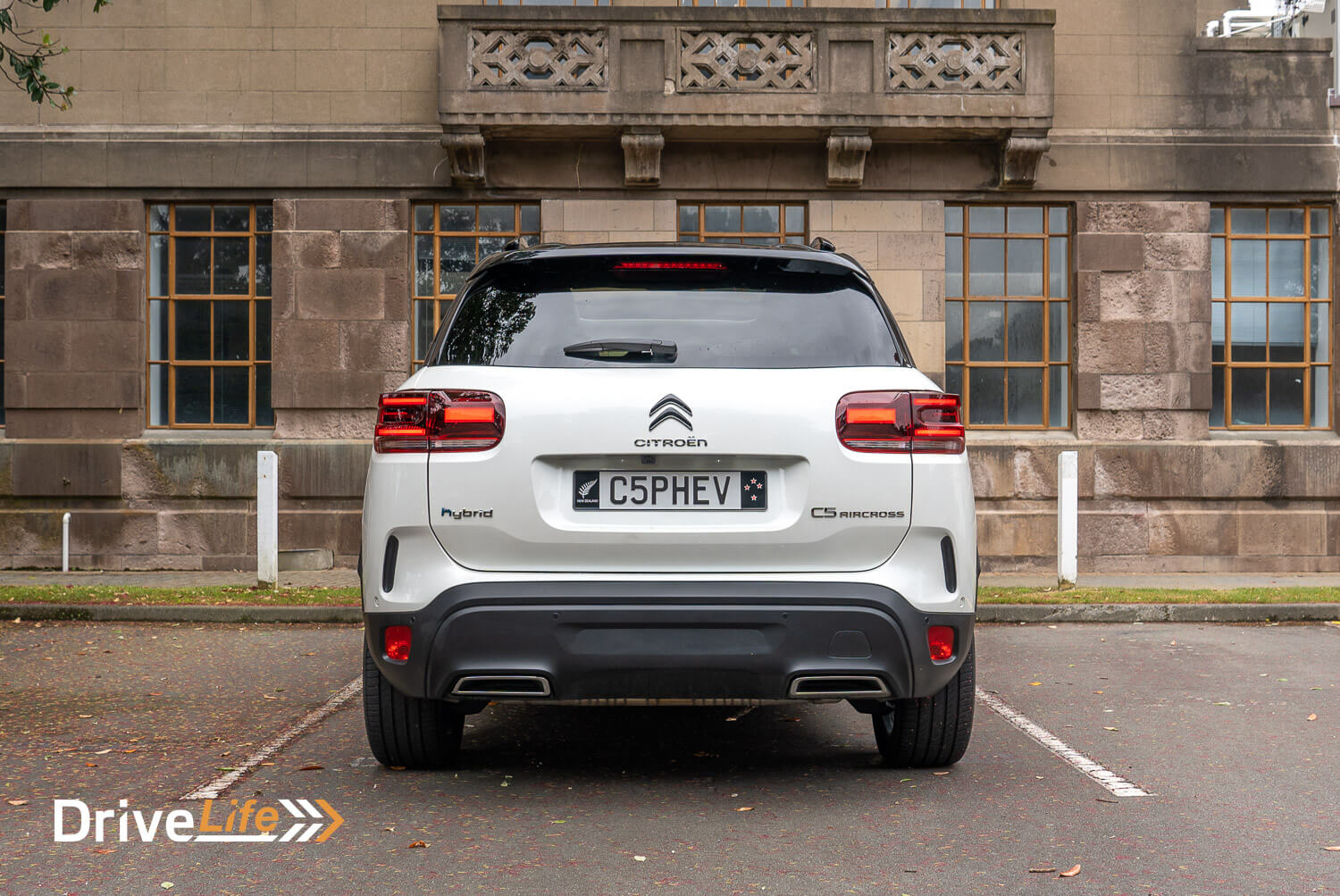
What’s In The 2022 Citroen C5 Aircross Range?
There are just two models to choose from, to make things simple. You’re either buying a hybrid C5, or not. The trim level is set to Shine, so you are buying a C5 Aircross Shine ($58,990), or C5 Aircross Shine Hybrid ($79,990).
Both are powered by a 1.6-litre, 4-cylinder, turbo-petrol motor driving the front wheels through an 8-speed automatic transmission. The C5 Aircross Shine puts out 133kW of power and 250Nm of torque and uses fuel at a rate of 6.3L/100km.
The plugin-hybrid version has a combined power output of 165kW and 360Nm of torque. Its fuel consumption is listed at 1.8L/100km. With its 13.2kWh battery, it has a range of 47km on a single charge (at which point the petrol engine would take over).
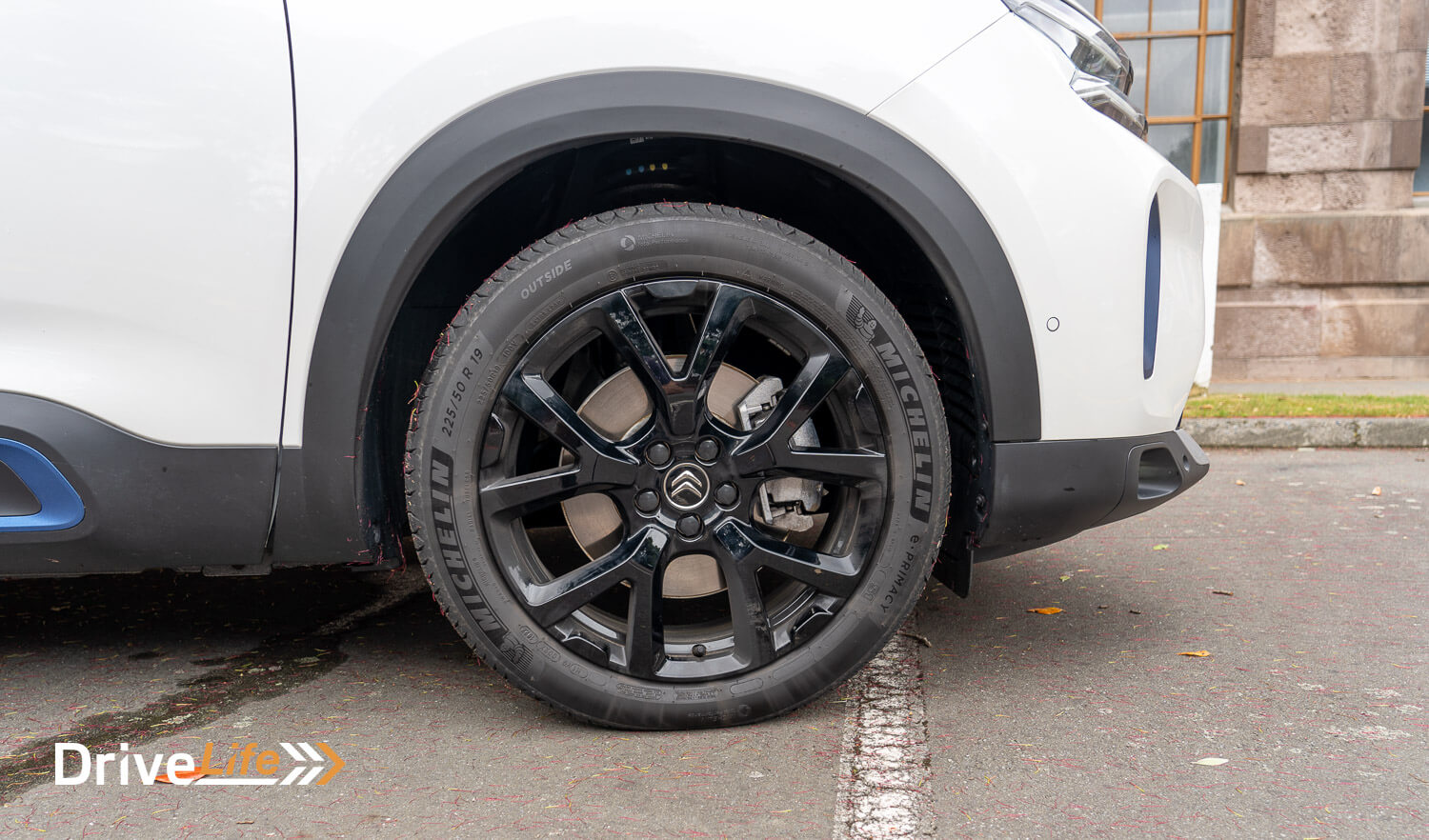
2022 Citroen C5 Aircross Shine Standard Equipment Highlights
Safety & Security
- 6 airbags
- Tyre pressure monitoring
- Adaptive cruise control with stop/go & speed limiter
- Lane Keep Assist
- Traffic Sign Recognition
- Active Emergency Braking with night function, pedestrian and cycle detection
- Blind Spot Monitoring
- Driver Attention Alert
- Forward Collision Warning
- Advanced Grip Control with Hill Assist Descent Control
Lighting and Visibility
- LED headlights with automatic high beams
- LED indicators
- Front fog lights
- ‘3D’ rear LED taillights
- Automatic lights
- Automatic wipers
- Welcome Home and Follow Me lighting
Exterior Features
- Black wheel arch extensions
- Overtinted rear windows
- Acoustic laminated front side windows
- 19” alloy wheels
Interior Features
- 12.3” digital dashboard
- LED interior lighting
- Paddle shifters
- Alloy pedals
- Rear air vents
- 6-way electric driver’s seat
- Advanced Comfort Seats
- Dual-zone AC
- Electric, heated and folding exterior mirrors
- Auto-dimming rearview mirror
- Electric park brake
- Tilt/telescopic steering wheel
- Front & rear parking senors with 180 colour reversing camera
- Semi-automatic park assist
- Keyless entry and start
- Electric tailgate
- 10” central touchscreen
- DAB audio
- Apple CarPlay/Android Auto capability
Moving up to the C5 Aircross Shine Hybrid adds:
- Semi-autonomous Lane Positioning
- Frameless auto-dimming rearview mirror with ‘Electric’ mode blue light
But if you buy the hybrid, you do lose:
- 2-position boot floor
- Advanced Grip Control with Hill Assist Descent Control
Our test car was a pre-production unit, so was fitted with a panoramic sunroof, black and blue Nappa leather trim with heated front seats and a driver’s massaging seat. These items are not available in New Zealand models.
2022 Citroen C5 Aircross – Colours
For your colour selection, only Bianca White is at no cost, otherwise:
- Nera Black $550
- Cumulus Grey $550
- Nimbus Grey $550
- Eclipse Blue $550
- Pearl White $950
Bianca White is a solid colour, Pearl White is pearlescent, and the others are metallic paints.
For a full list of specs and options available for the Citroen C5 Aircross Shine Hybrid, head on over to the Citroen New Zealand website.
How Does The 2022 Citroen C5 Aircross Shine Hybrid Compare To Its Competition?
All prices below exclude the refund or additional cost of the New Zealand Clean Car Programme.
| Make/ Model | Engine | Power/ Torque kW/Nm | Seats | Fuel L/100km | Towing Capacity | Boot Space, litres | Price (excl CCP) |
| Mitsubishi Outlander XLS PHEV 4WD | 2.5-litre 4-cylinder plugin hybrid | 184/450 | 7 | 1.6 | 750/1,600 | 472 | $79,990 |
| Citroen C5 Aircross Shine Hybrid | 1.6-litre, 4-cylinder turbo/plug-in hybrid | 165/360 | 5 | 1.8 | 750/1,300 | 460 | $79,990 |
| Ford Escape PHEV ST-Line X | 2.5-litre 4-cylinder plugin hybrid | 167/NA | 5 | 1.5 | NA/1200 | 517 | $66,690 |
| Kia Niro Phev Water | 1.6-litre, 4-cylinder turbo/plug-in hybrid | 134/265 | 5 | 0.8 | 600/1,300 | 348 | $63,990 |
| MG HS +EV Essence | 1.6-litre, 4-cylinder turbo/plug-in hybrid | 189/370 | 5 | 1.7 | 750/1,500 | 451 | $55,990 |
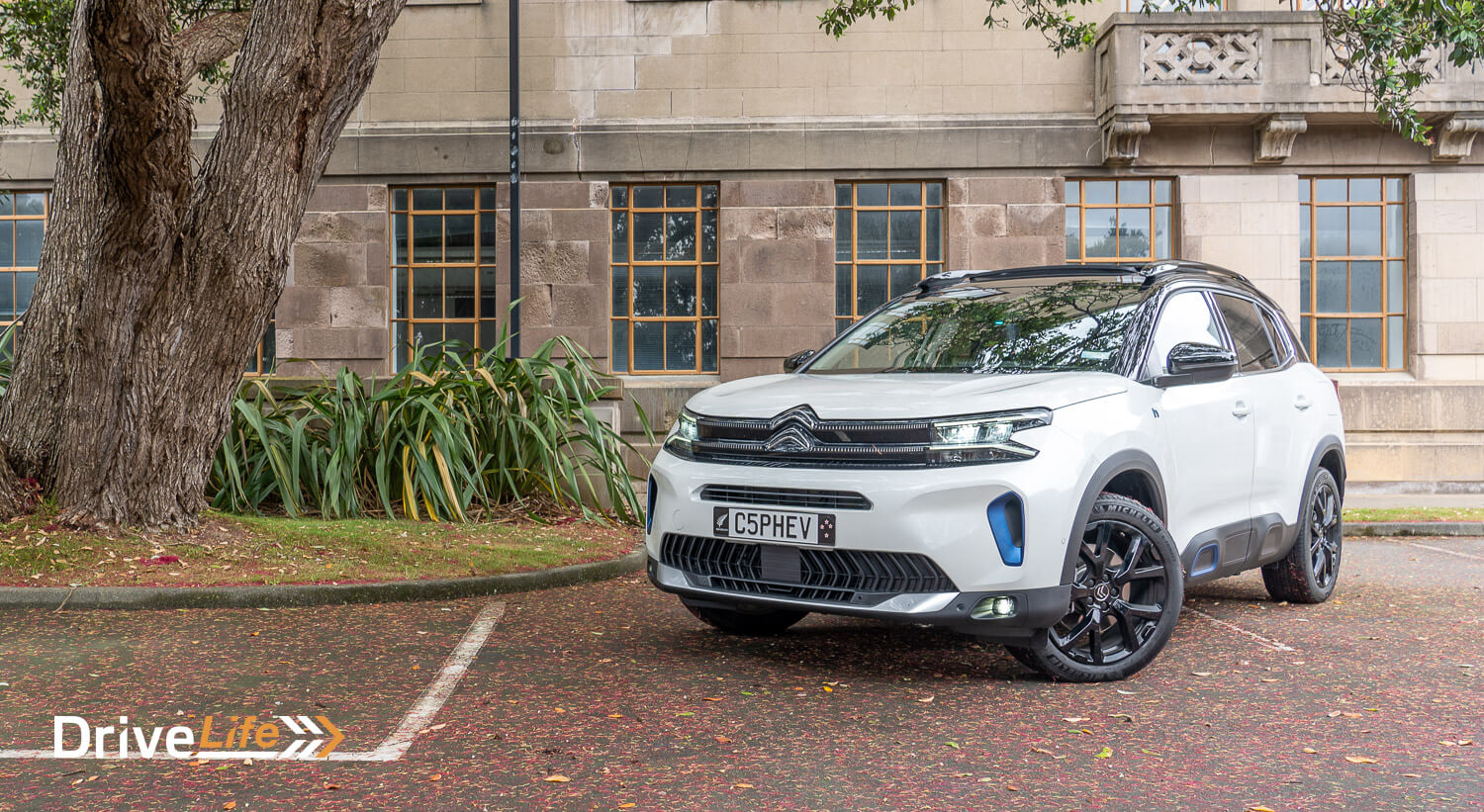
First Impressions Of The 2022 Citroen C5 Aircross Shine Hybrid
Citroen couldn’t help themselves with the PHEV model, changing some of the trim on the front and sides of the car to a nice metallic blue. It’s all very tasteful though, and certainly isn’t screaming out, “look at me!” as some PHEVs do.
Otherwise, it’s a stock-standard C5 Aircross, and that’s fine with me. With nice proportions and flowing lines, it’s an attractive SUV. The black roof and C pillars along with the plastic wheel arches and other plastic adornments make the car seem smaller and lower than it really is.
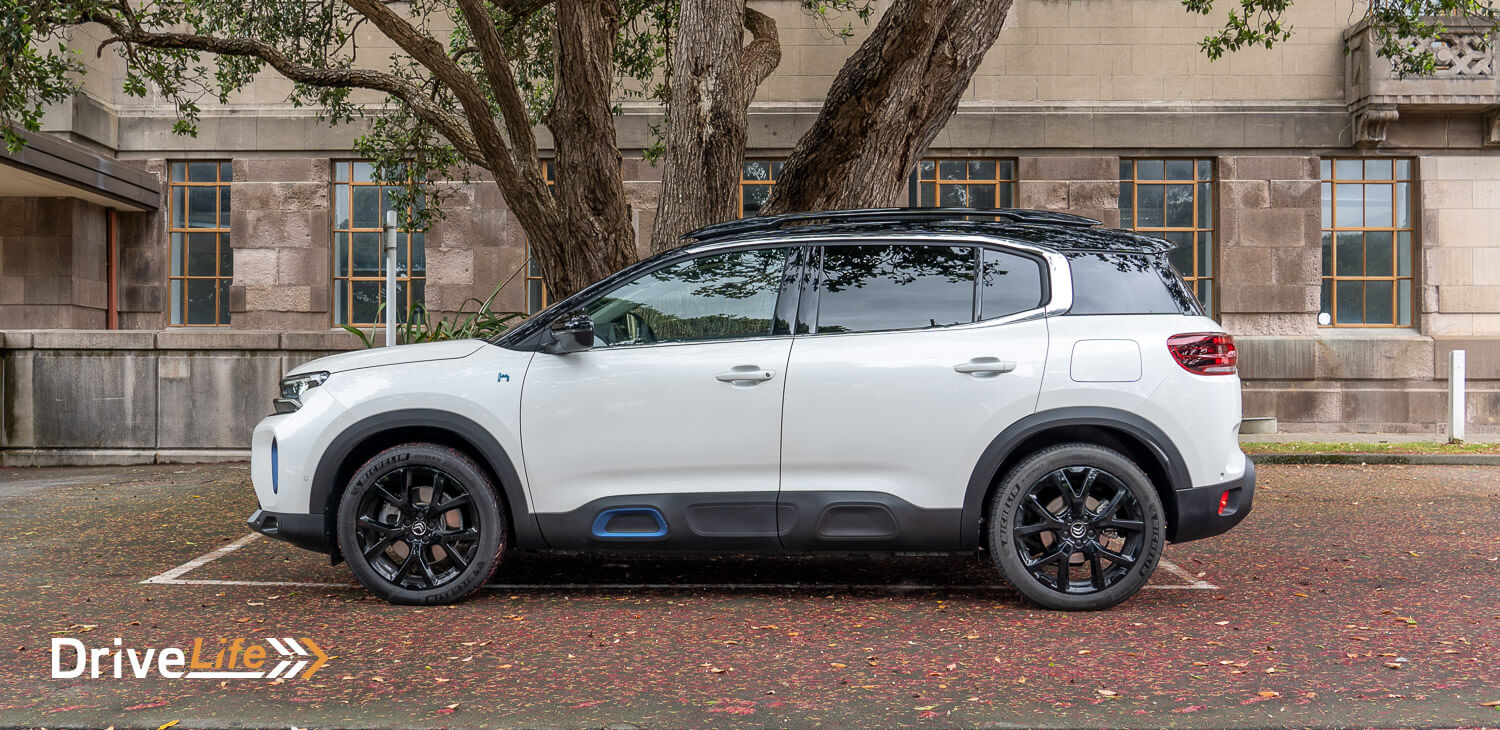
What’s The Interior Like In The 2022 Citroen C5 Aircross Shine Hybrid?
Overall, the interior of the 2022 Citroen C5 PHEV is pretty inviting. With ivory-coloured headlining and pillars, it feels nice to step inside the car.
You’ll notice when opening the doors that the plastic capping on the outside of the doors goes right under the sill, meaning your wife isn’t going to get her dress dirty as it scrapes along the sill when stepping into the cabin.
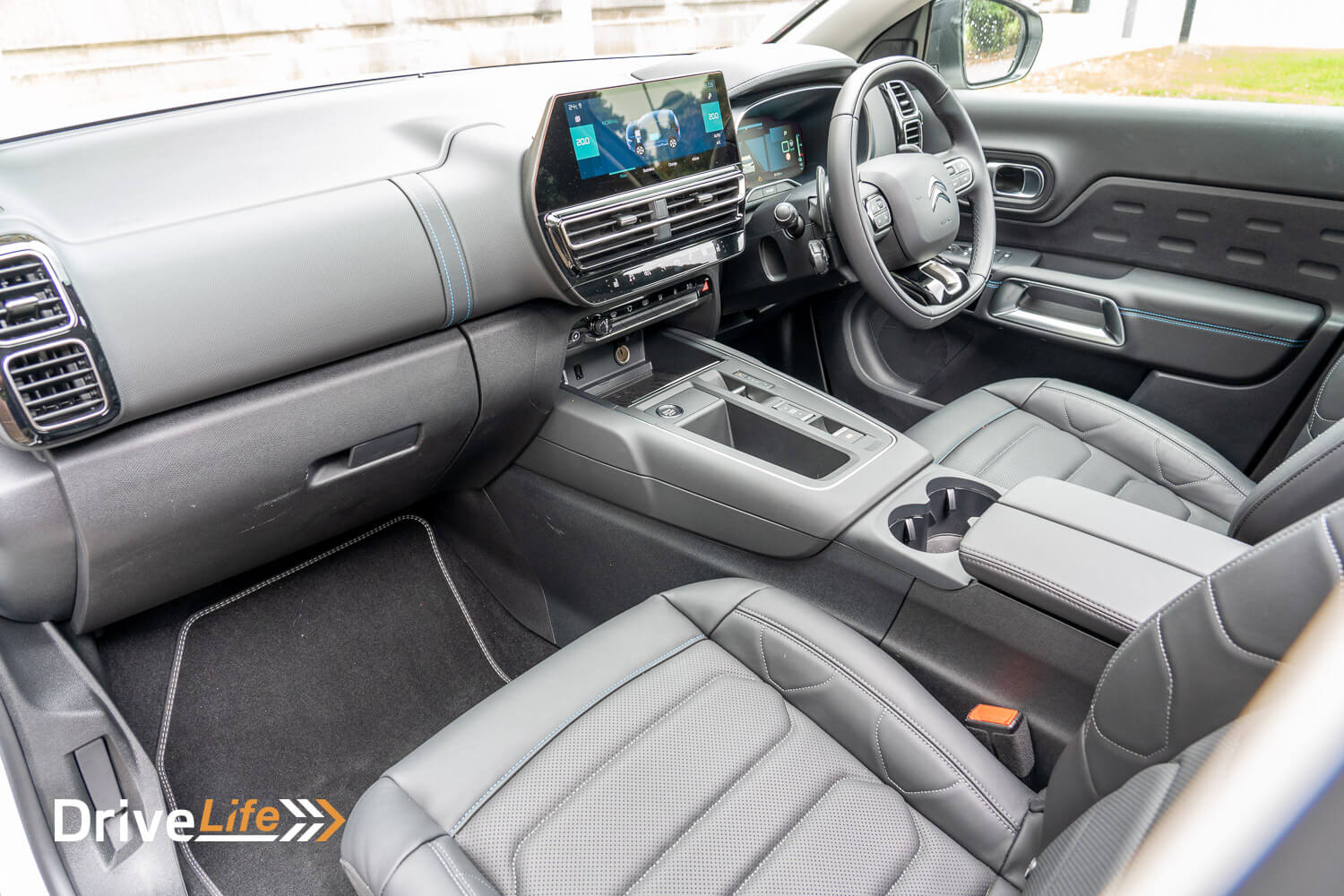
In the driver’s seat and looking about, it can seem a bit downmarket with lots of hard plastics inside. Not that there’s anything wrong with hard plastics in an SUV, but I was expecting a bit less at $79,900.
The steering wheel is flat-bottomed and leather, and it feels excellent. Below the driver’s feet are some racy alloy pedals, while the centre console hides a deep cubby that goes right under the cupholders. The cupholders are illuminated, not something you normally see but are appreciated for those night drives with your cup of coffee at hand.
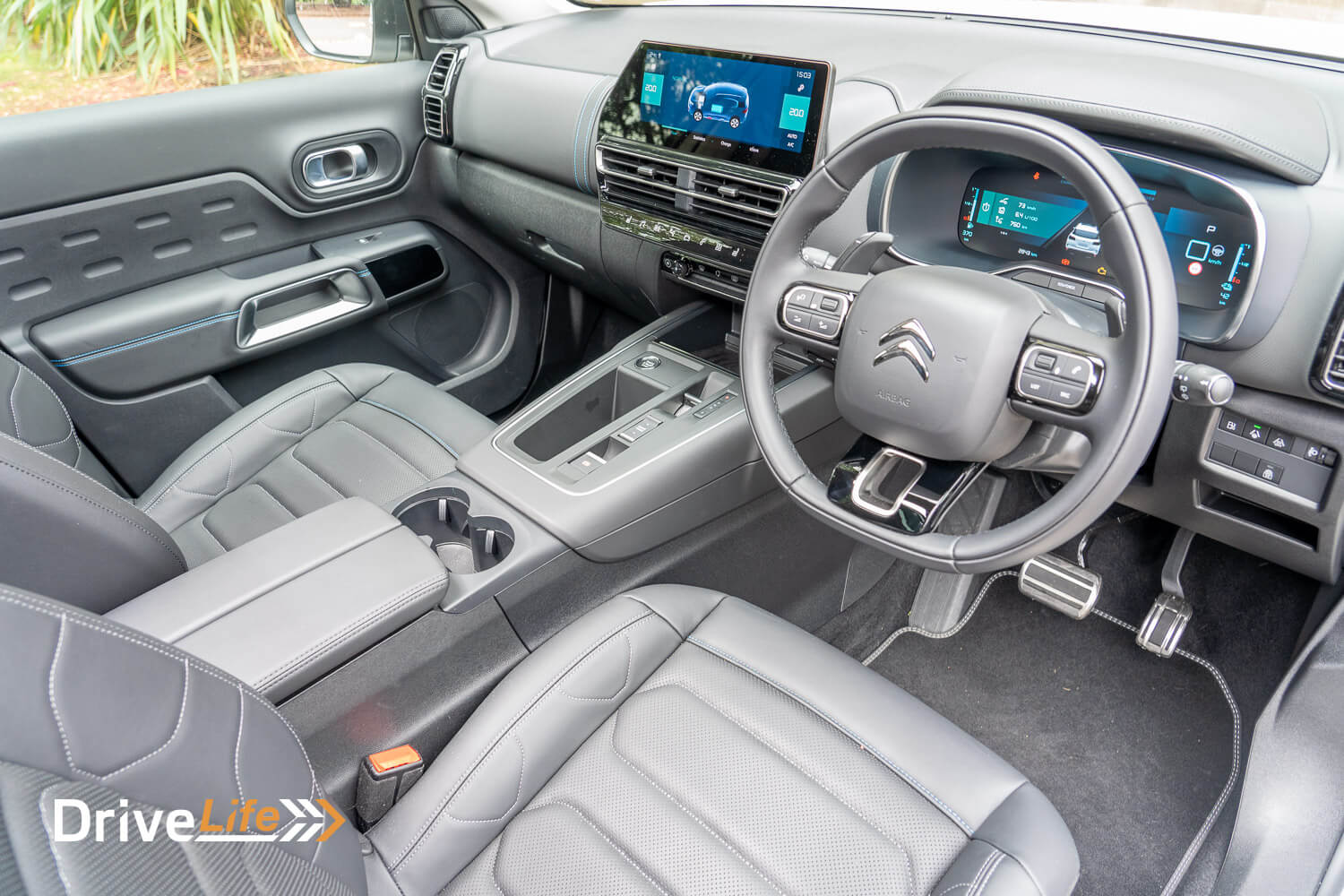
The centre screen isn’t integrated but doesn’t look too tacked on. It’s a good size at 10” but isn’t ideal when using Apple CarPlay or Android Auto (see the Drive section).
At the base of the dashboard is a Qi wireless charging pad for your phone, two USB-A ports and a 12-volt socket that I used for my dashcam. The glovebox has a full-sized lid, but like other Citroens, the actual usable space is about half the width of the glovebox lid. In saying that, there’s still a reasonable amount of space there for your bits and pieces.
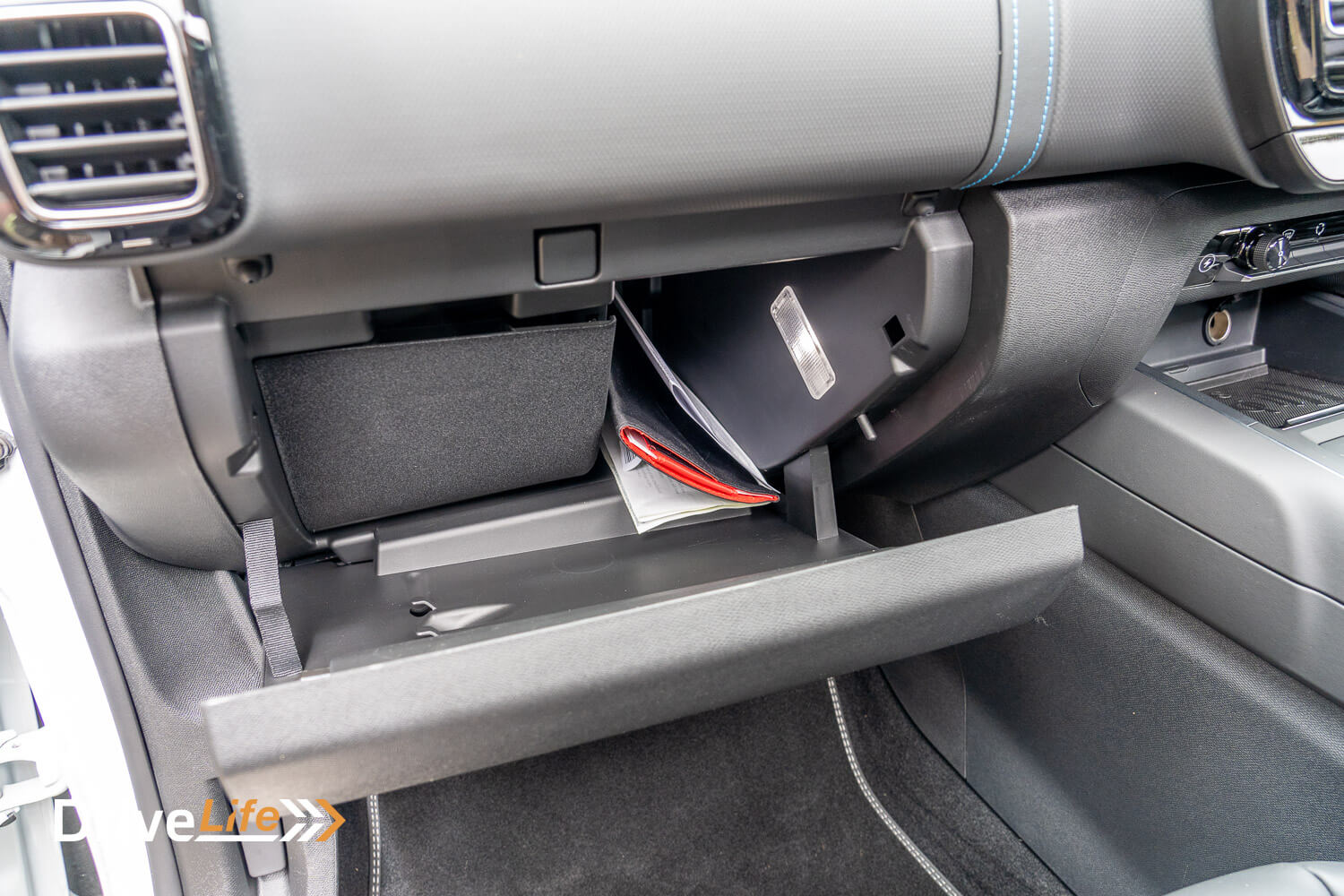
It’s the seats inside that are a bit of a highlight; that diamond pattern makes them look inviting, and comfy (spoiler alert: they are). The whole interior of the C5 is reminiscent of the C3 we tested back in 2022, not that that’s a bad thing.
Rear legroom is more than reasonable, and the seats are split 30/30/30. You can’t actually release the seat backs from the boot at all, so need to open the rear doors to drop each seat, which can be a pain. On the plus side of things, the rear seats slide for more storage space, and they recline too.
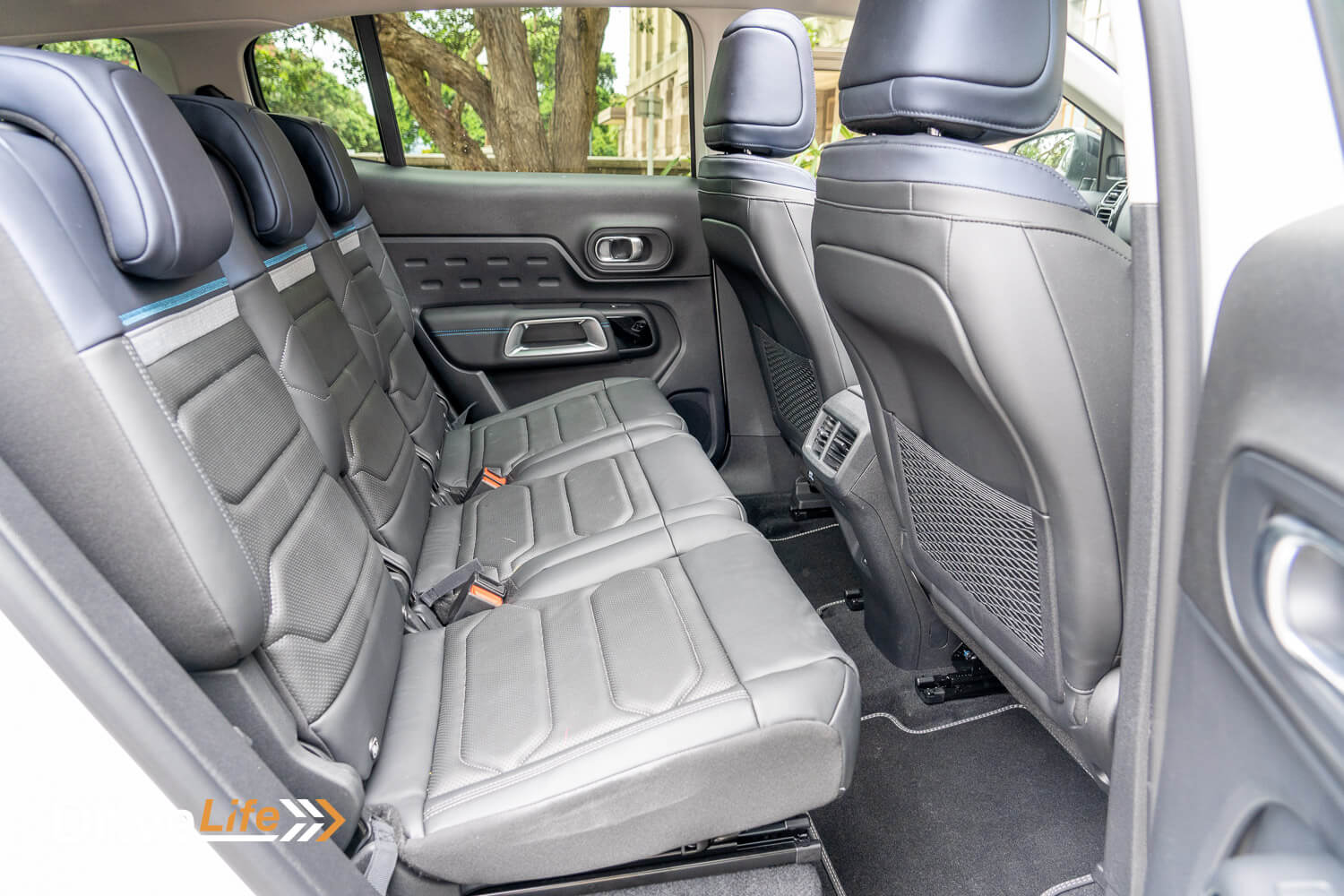
The boot itself is reasonably big at 460 litres with the back seats up, opening out to 1,510 litres with them down – a small reduction from the non-hybrid version. There’s a shallow storage area under the boot floor, but no spare tyre – just a pump. You’ll find a 12-volt socket in the boot and the loading height is relatively low.
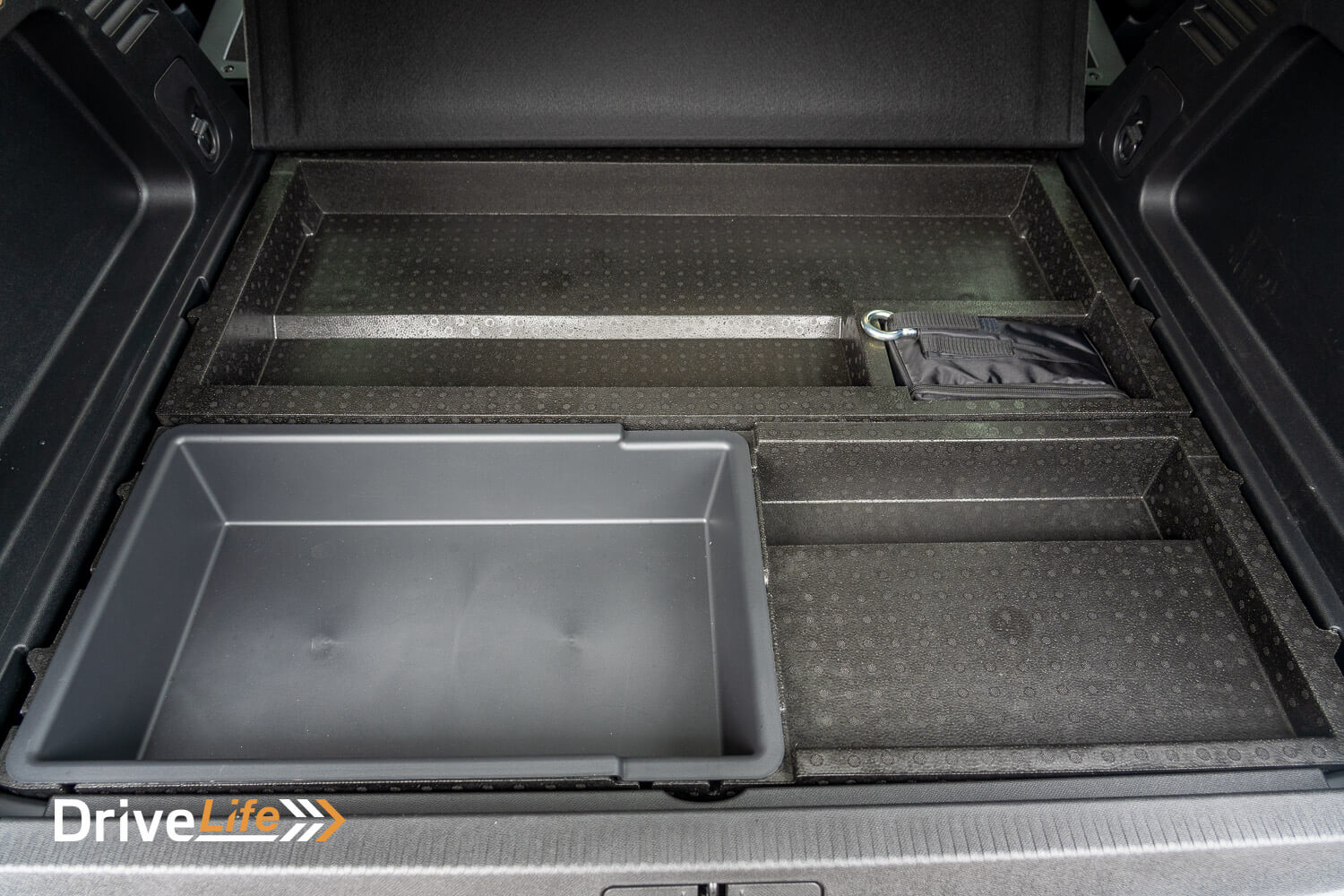
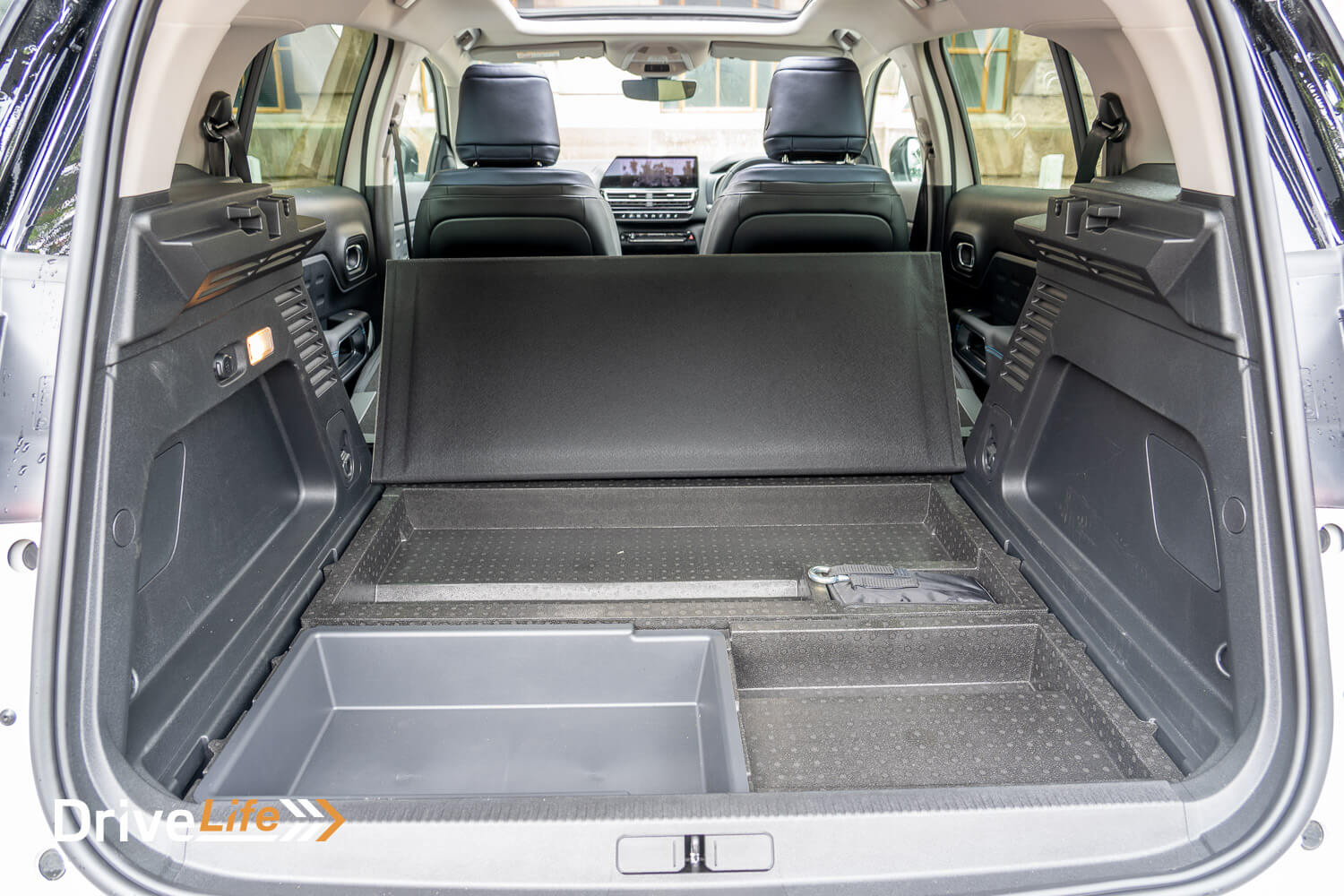
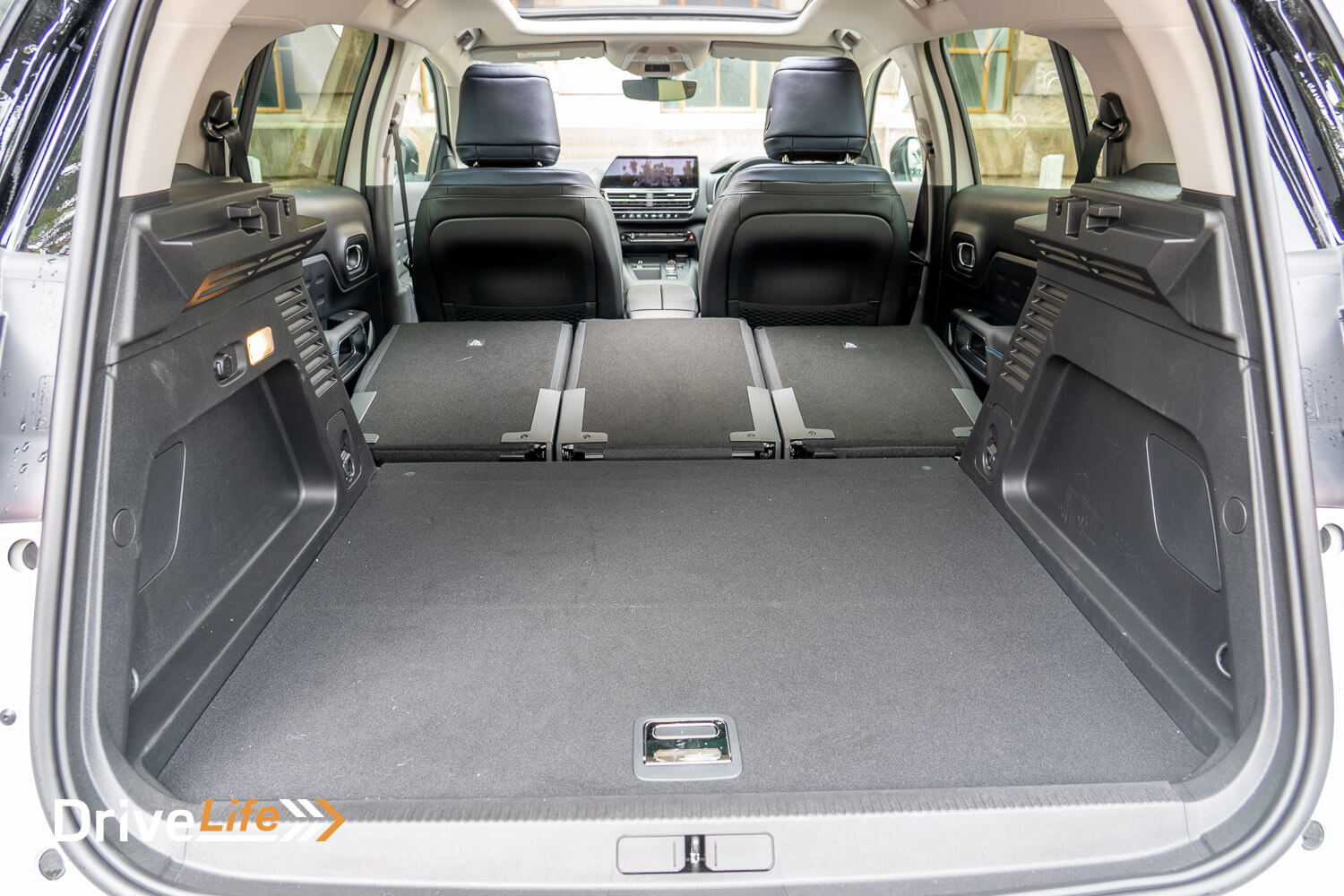
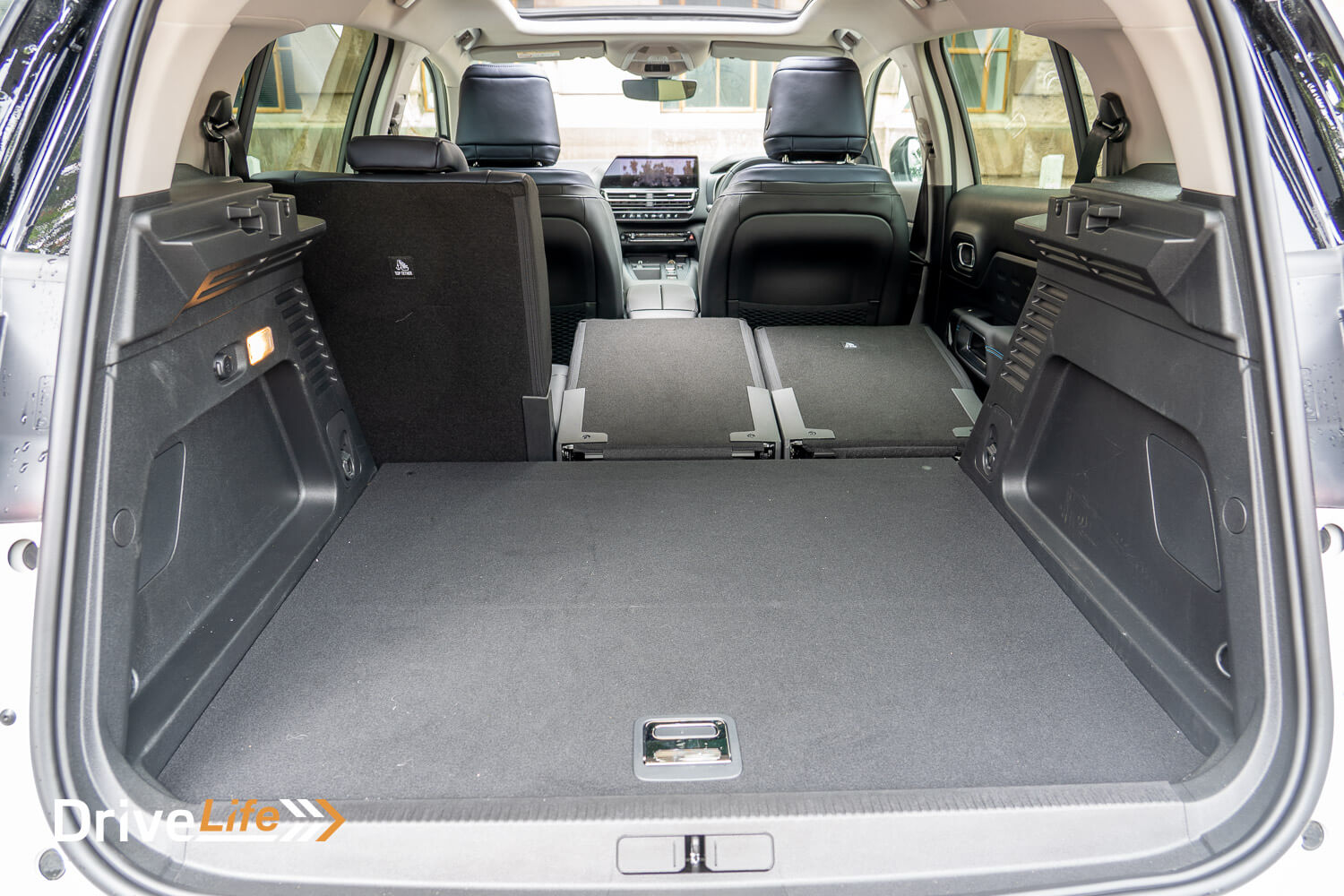
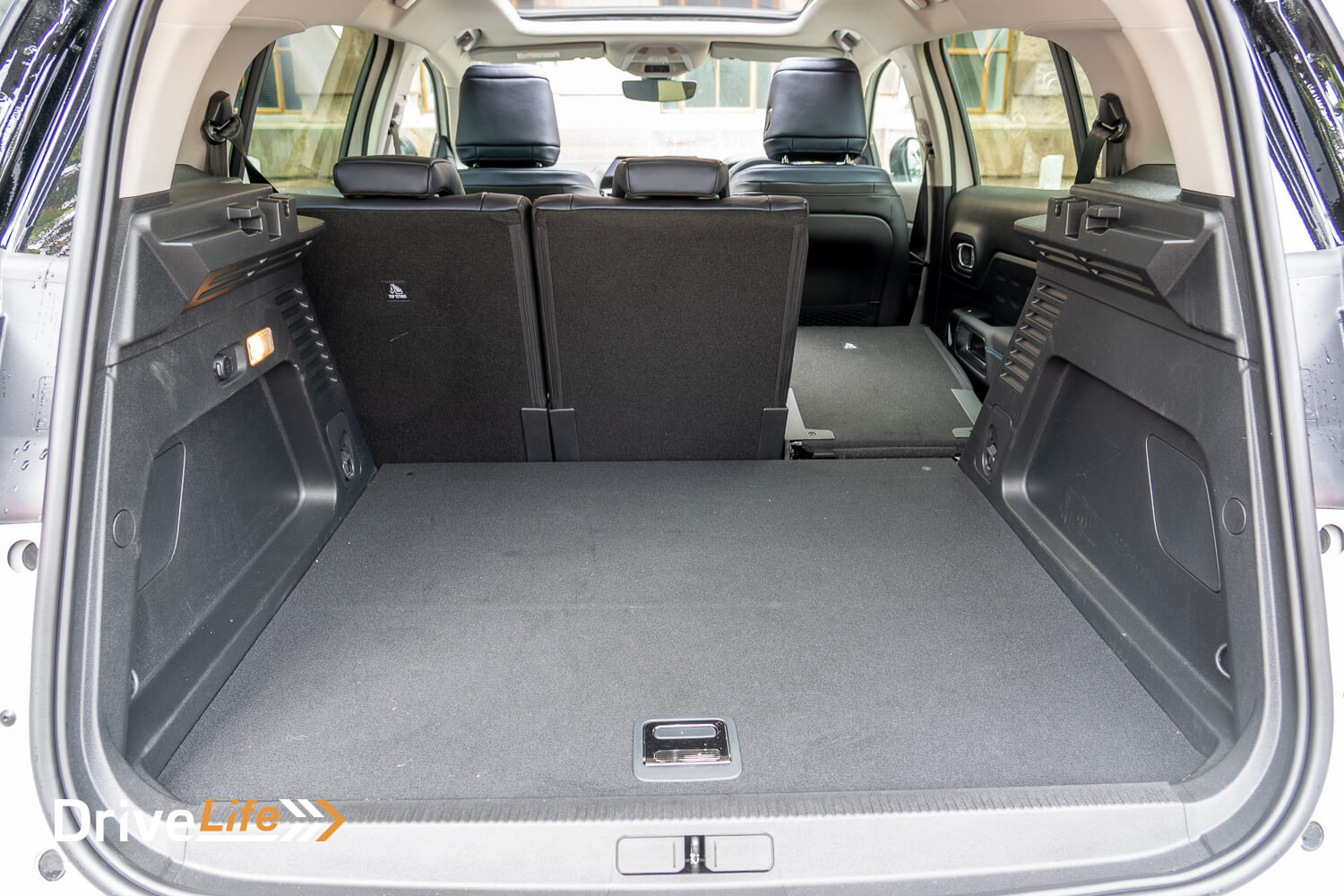
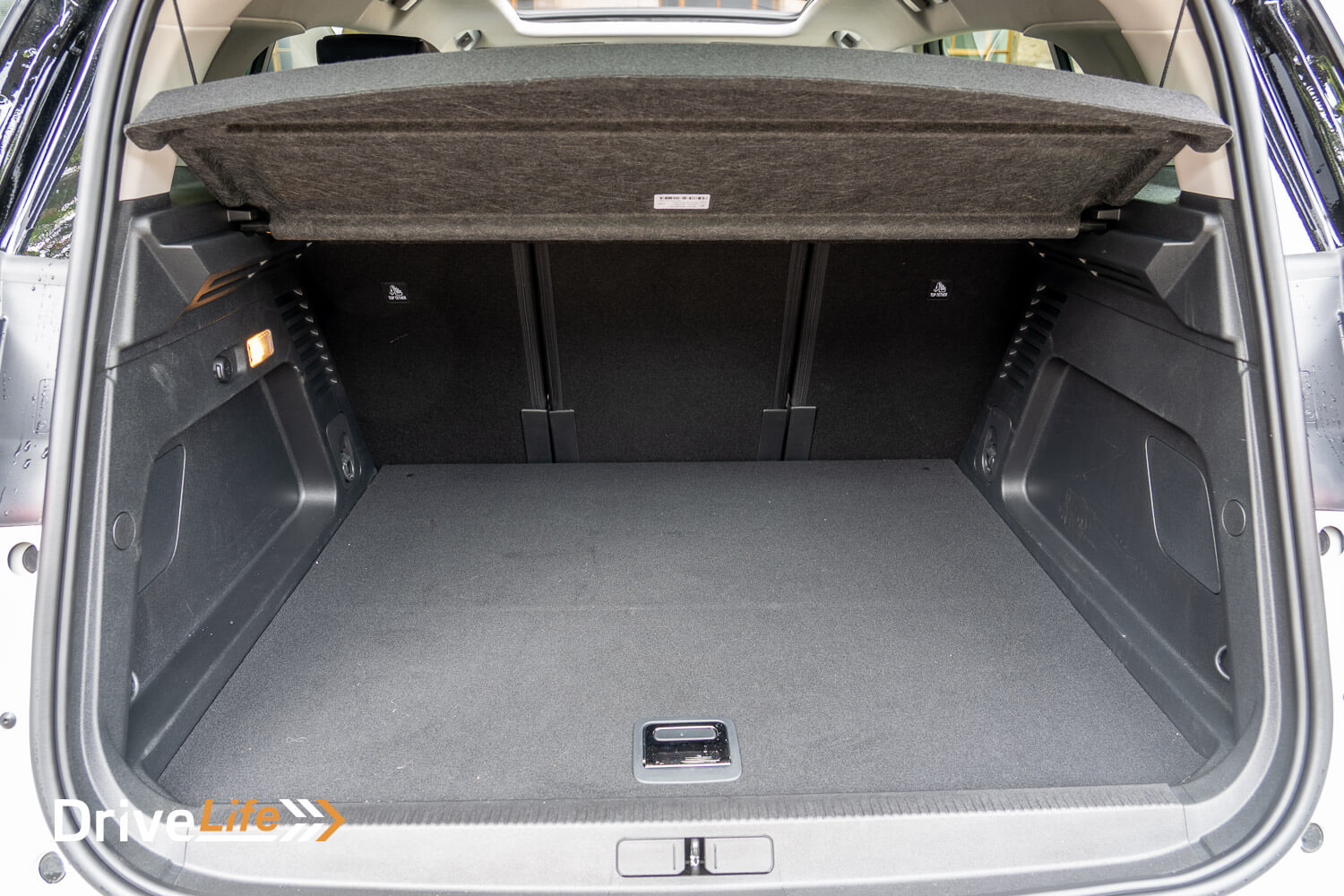
What’s The 2022 Citroen C5 Aircross Shine Hybrid Like To Drive?
With 640km of petrol range on pickup, we got the C5 with a full battery charge showing another 63km in EV-only mode. We’d be hitting the road south the next morning, so time to check out the C5 PHEV as an Auckland commuter.
The first major impression is the ride quality. It’s silky smooth, better even than the Peugeot 308 GT I had just dropped off. This car glides over Auckland’s terrible road surfaces, with rarely a thump coming into the cabin. It bodes well for a long trip on SH1 tomorrow. Another highlight in Auckland driving is the turning circle; at 10.7 metres, it does well on city streets.
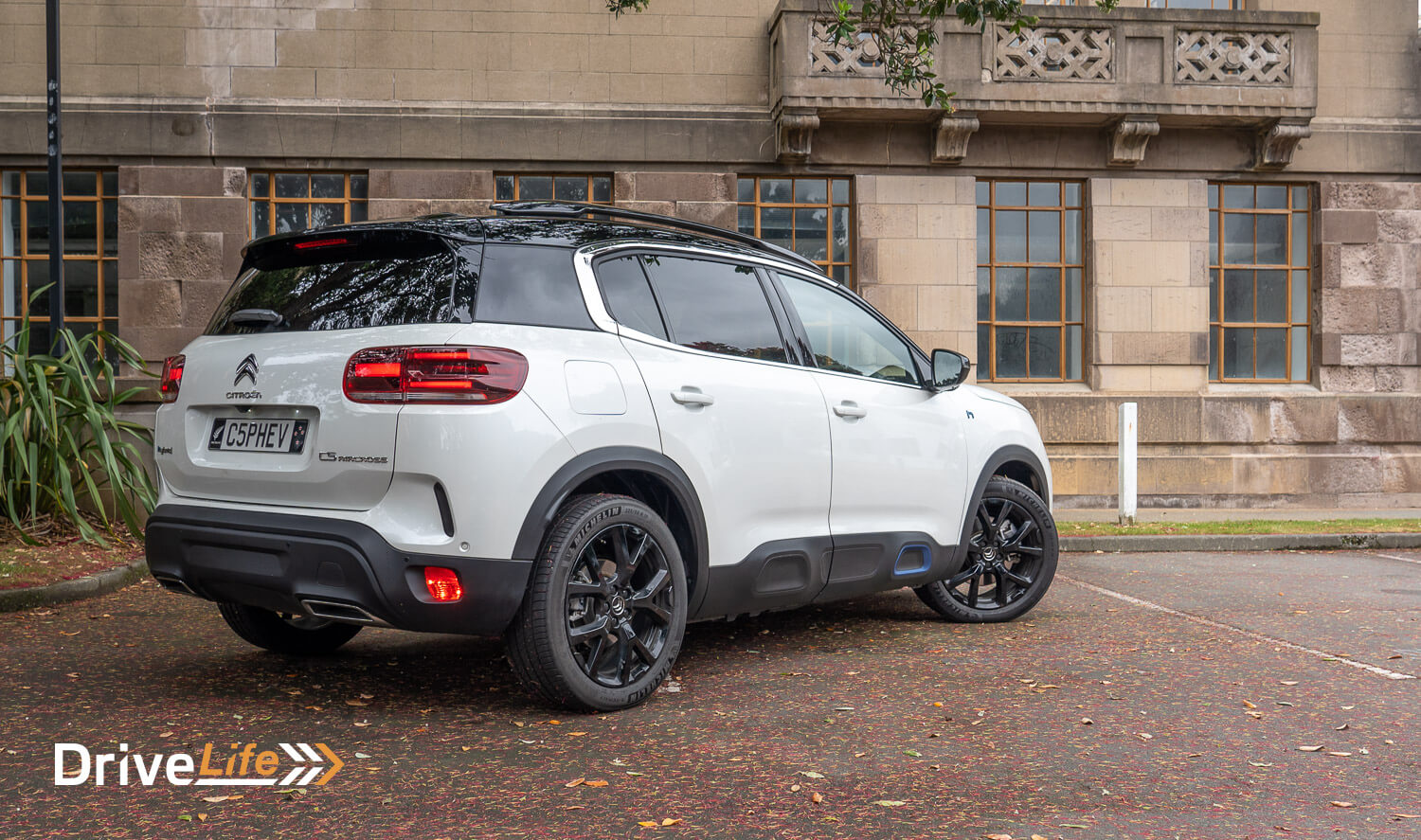
I notice the steering wheel paddles don’t control any brake regeneration (regen), they’re only for manually swapping gears in the 8-speed automatic gearbox. There is a regen button down by the gear selector, a little “B” identifying it. Switching this on brings in a reasonable amount of regenerative braking, but such a shame that when you turn the car off, it doesn’t come back on again when you next drive. There do seem to be some smarts around brake regeneration in this model; on the motorway, less regen is applied so you aren’t getting a jerky drive. Around town, more regen is applied for different situations. We’re seeing this type of adaptive regen appear more and more in hybrids and EVs these days, and it started with the BMW iX we reviewed in 2022. It hasn’t taken long for the idea to catch on.
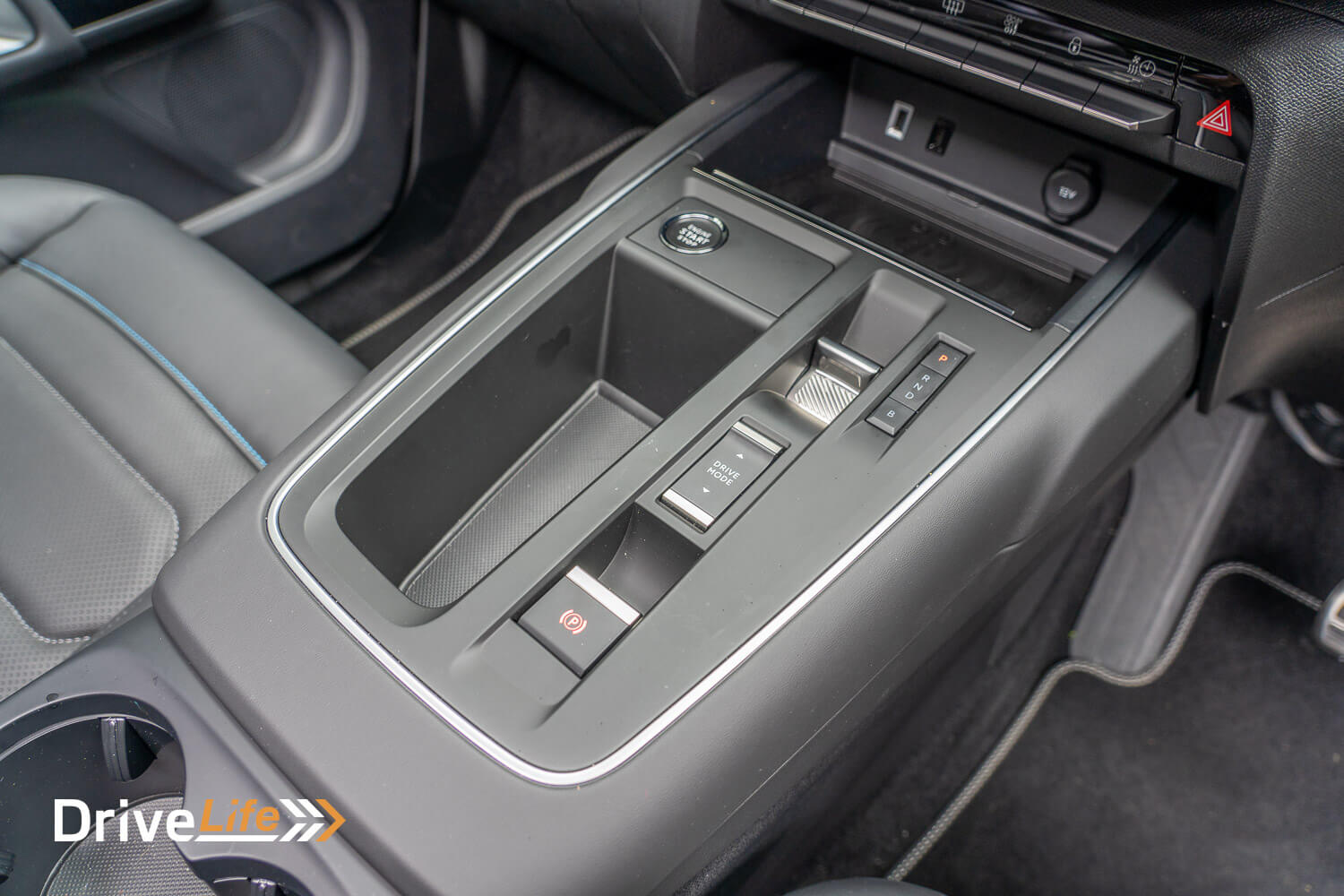
While driving, you can bring up a Hybrid page on the infotainment system, with a few options. One of them shows the C5, and what’s driving the front wheels (battery, or petrol engine). This isn’t anything new but the OCD in me liked that the graphic of the car shows the panoramic sunroof (even though this isn’t available in New Zealand), and the wheels all turn as you are actually driving. It does the same on the dashboard graphic, too. Cool.
The C5 PHEV is fitted with an electric park brake, and like its distant cousin, the Peugeot 308, there is no brake auto-hold button like so many cars with an electric park brake have. Hopefully, we’ll see this in some future update. Auto brake-hold is one of the best features of having an electric park brake.
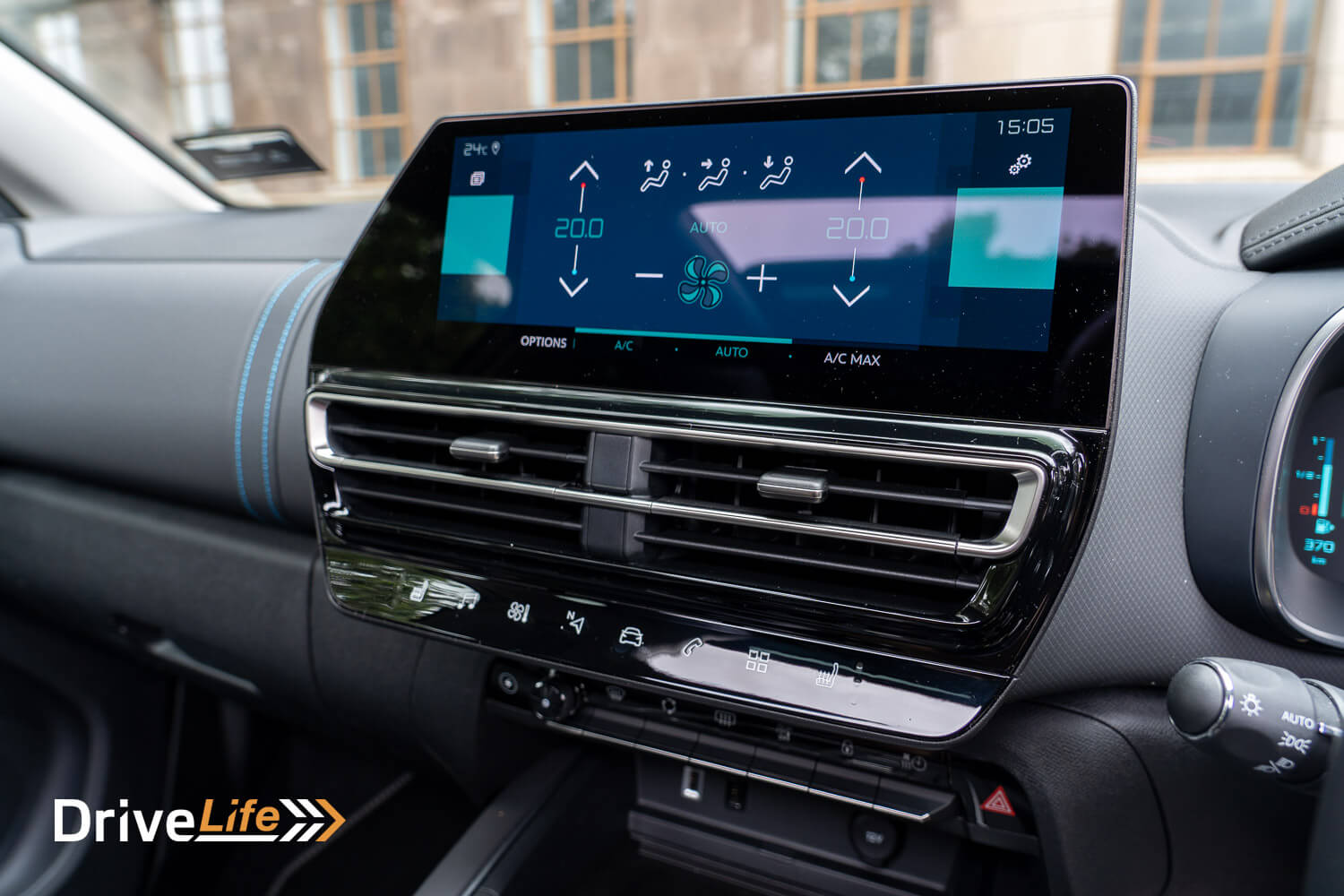
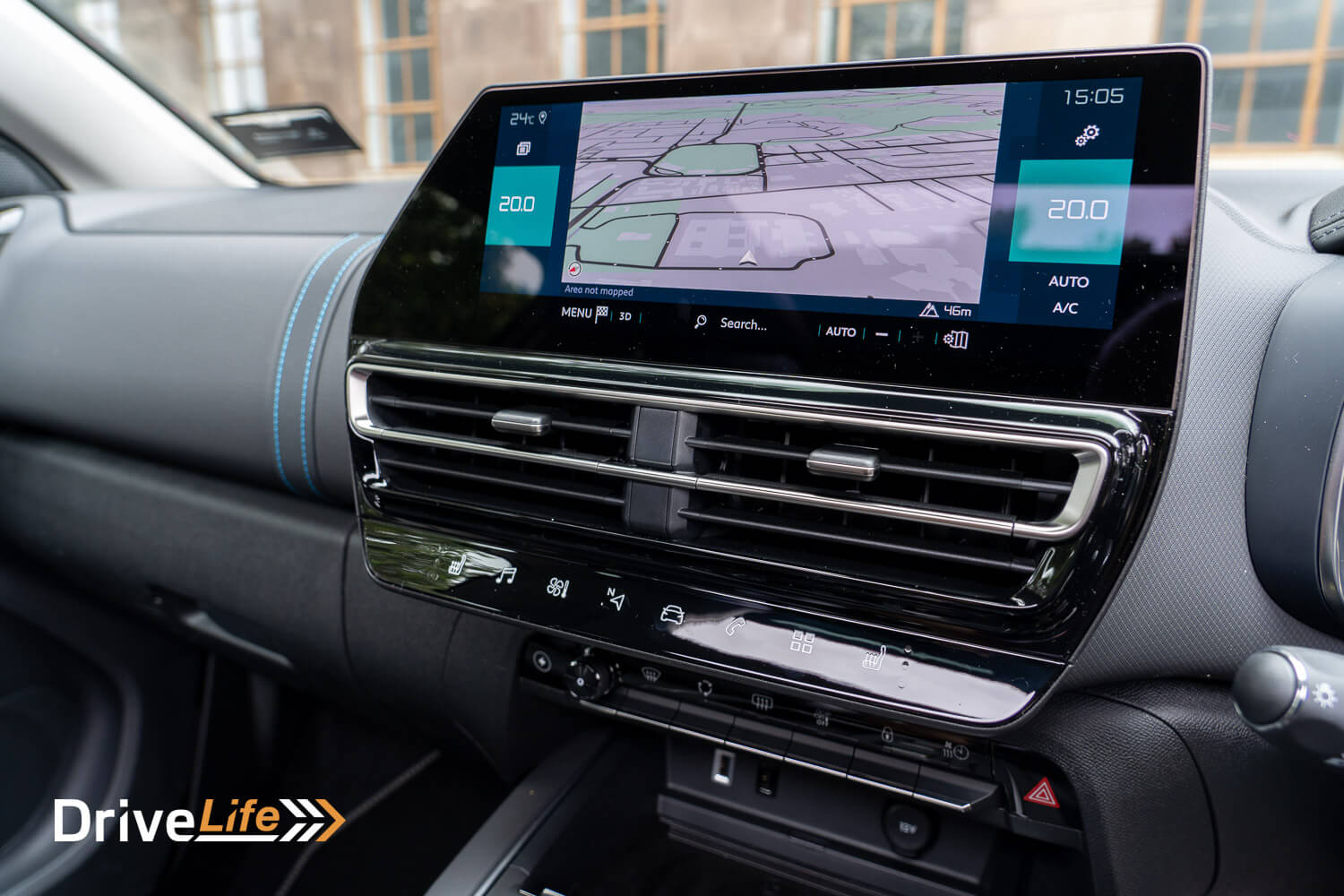
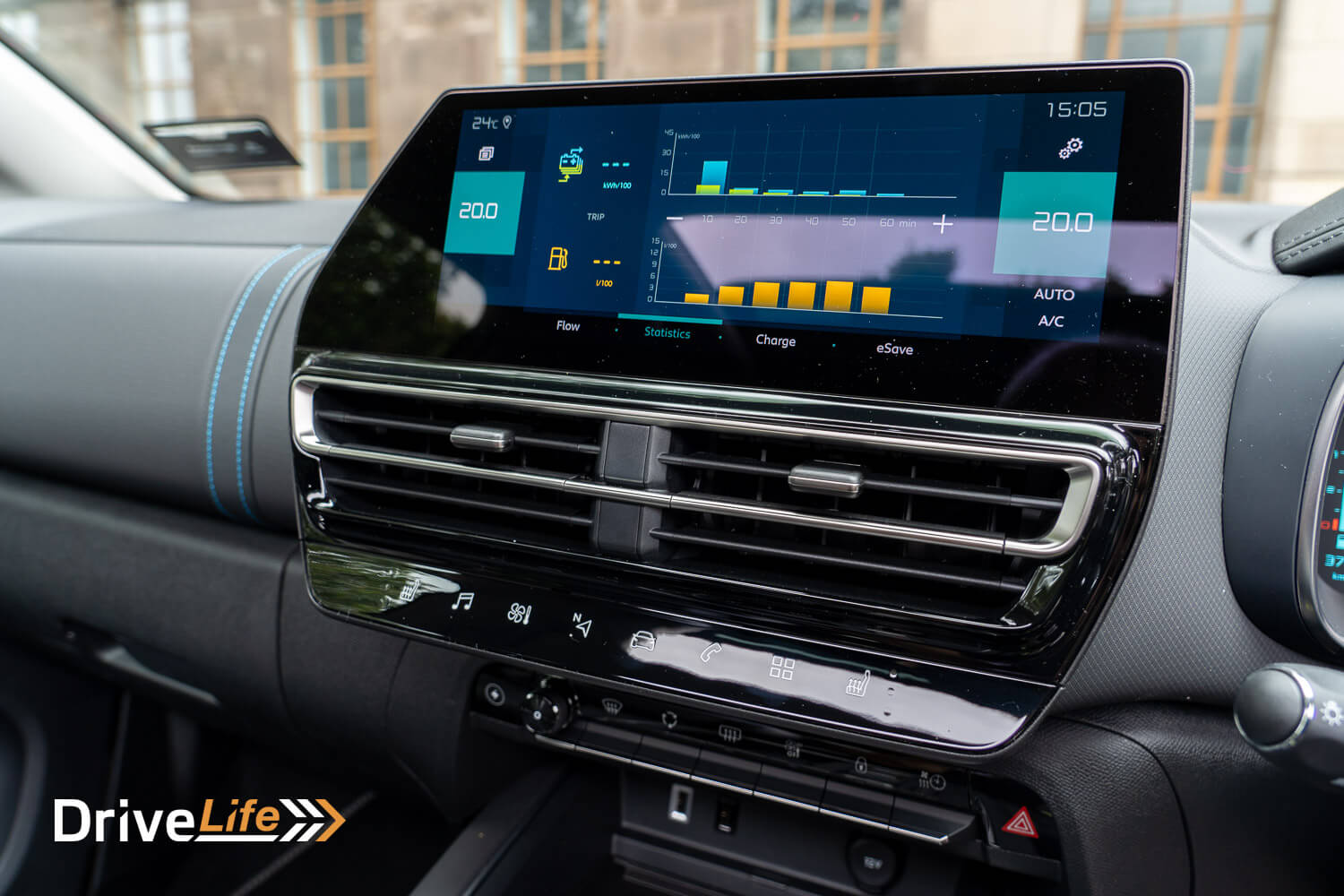
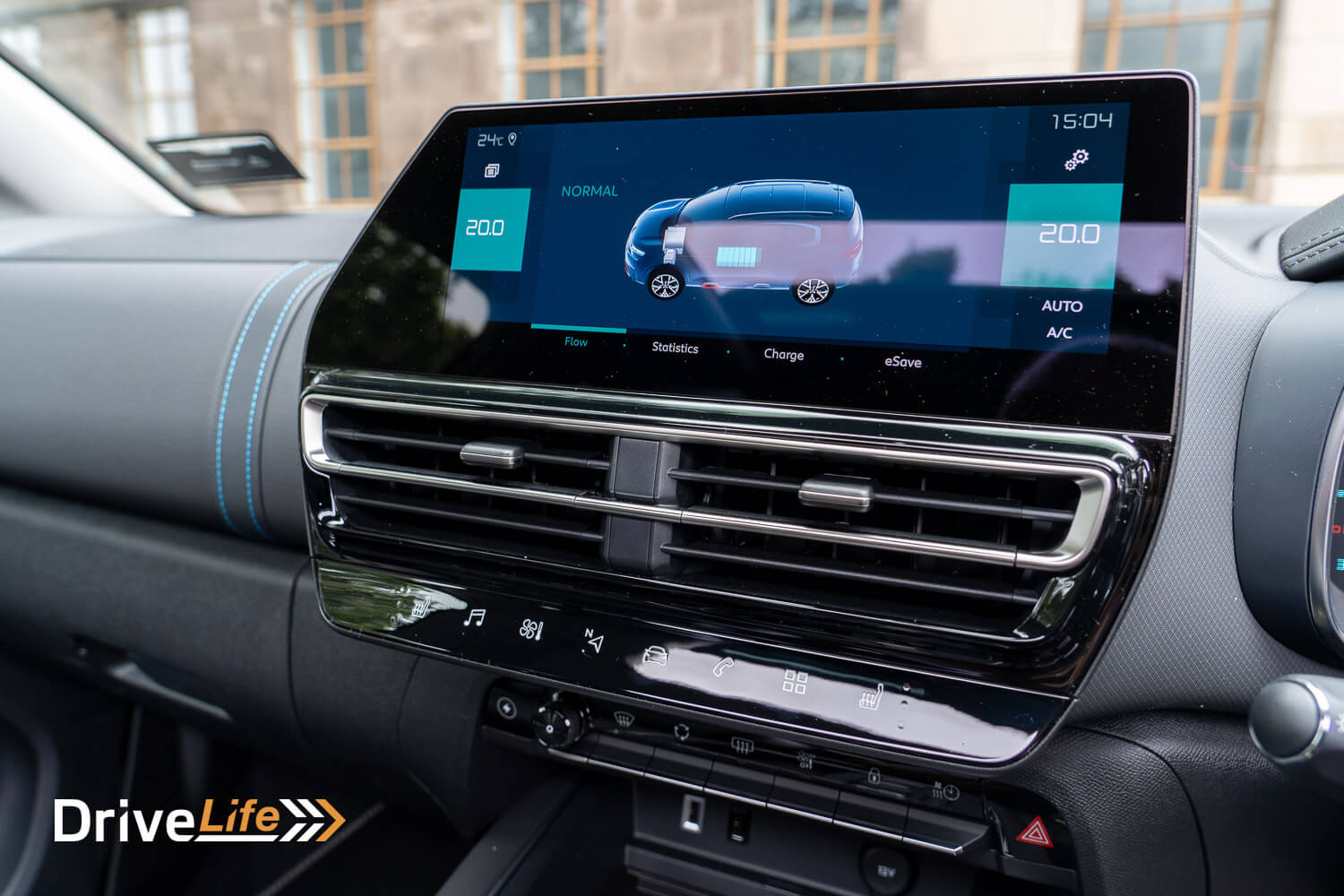
On Auckland’s motorways, that massive C pillar can block a reasonable amount of your rear three-quarter vision but there is blind spot monitoring in the C5 PHEV to help keep you safe. Visibility out of the car is very good, otherwise. After a string of cars with tiny rear windows, it was great to easily be able to see out the back window of the C5 PHEV.
Hitting the road South, that 8-speed automatic transmission is excellent. Smooth changes, right gear at the right time. It’s almost perfect. It’s the same transmission as in the Peugeot 308 I had dropped off the day before, but being a PHEV, the C5 doesn’t suffer from the same slight hesitation on acceleration from a stop. The hybrid system gets the car moving, so any such hesitation is masked nicely.
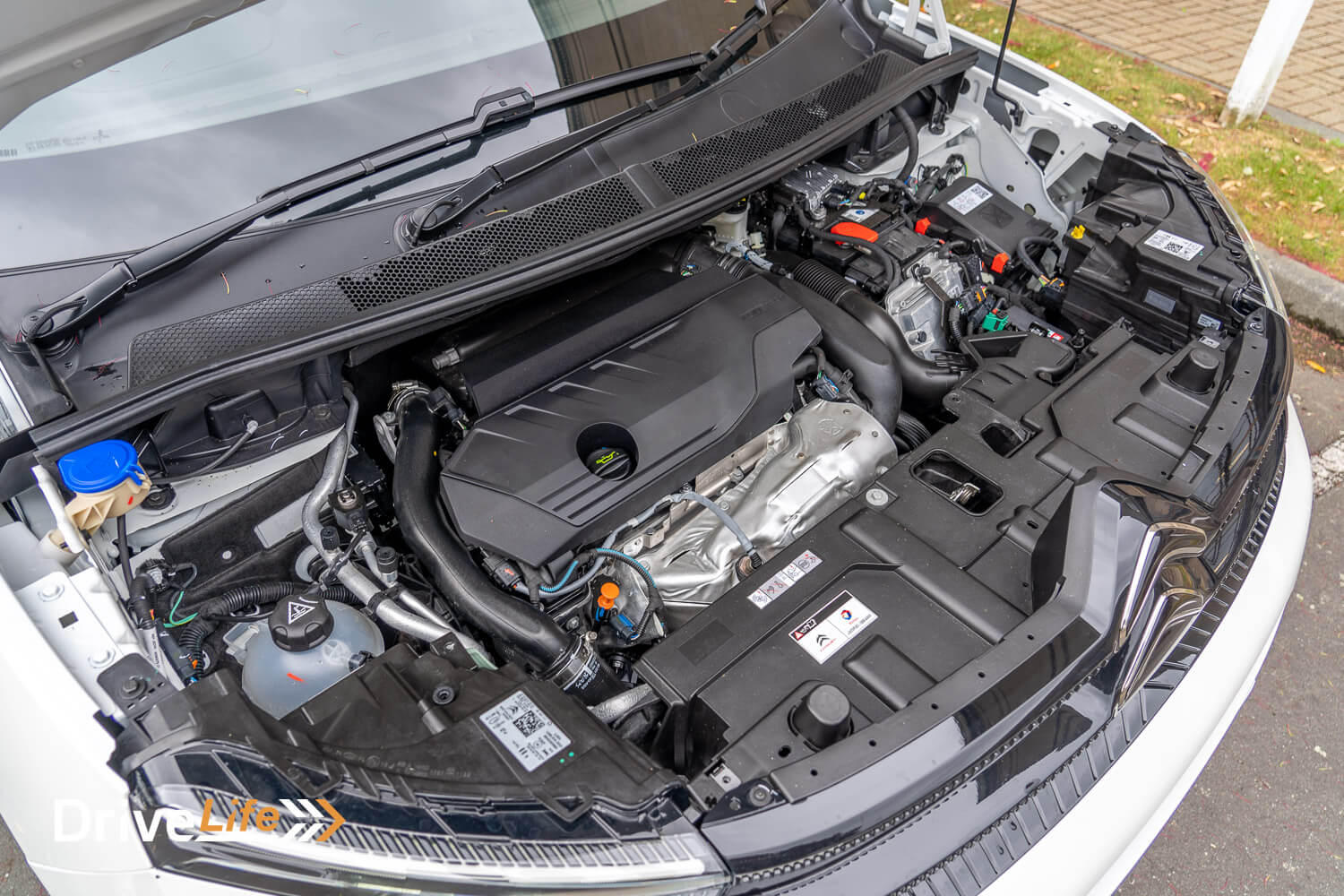
I’ll admit to using the C5’s massaging seat all day long and so it’s a little disappointing that this isn’t even available as an option. It’s superb on that long drive South.
With intermittent rain most of the day today, I was grateful for the automatic wipers on the C5 PHEV, but you can’t adjust their sensitivity. It’s either auto or not, where every other car lets you adjust them. Not the end of the world but it feels like a step backwards.
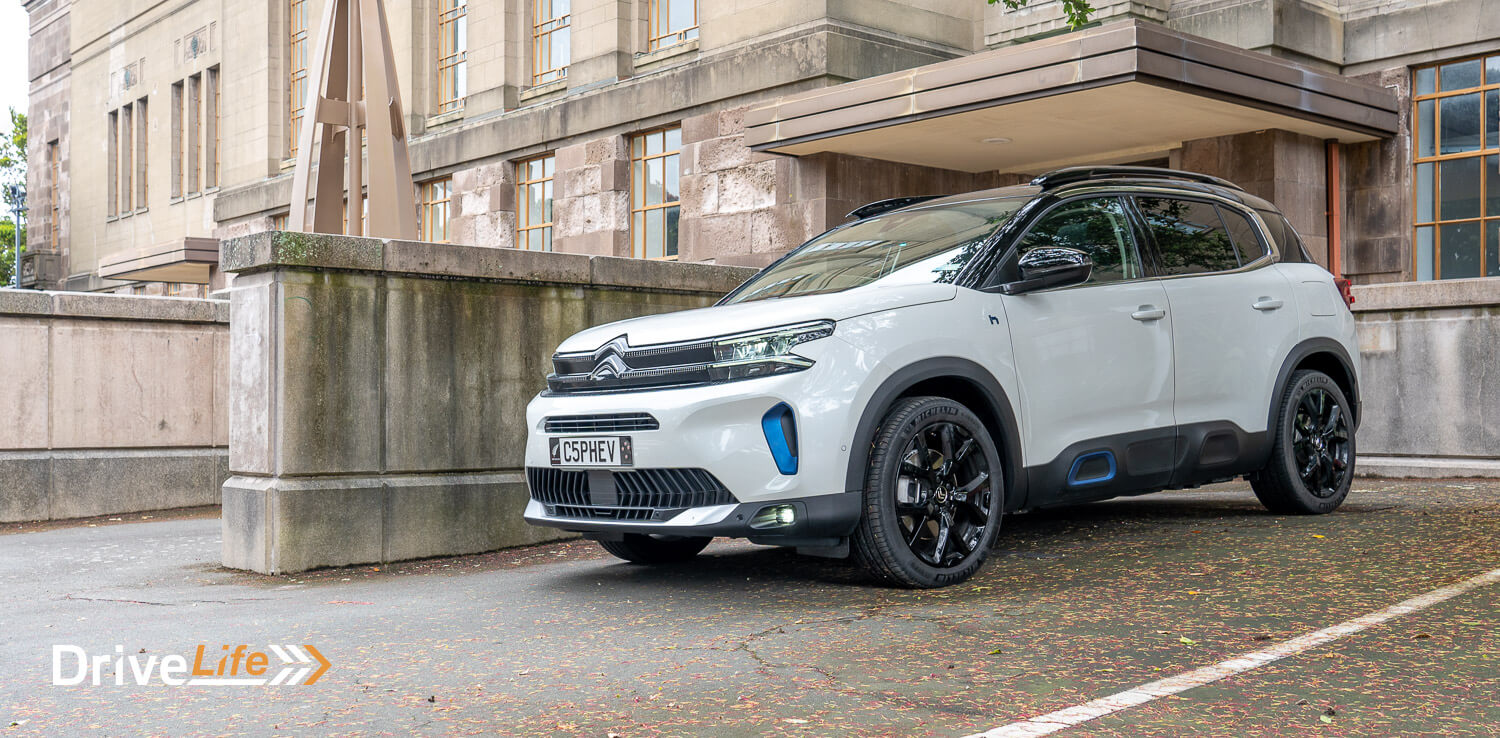
Open-road driving is made easier and safer with adaptive cruise control. The C5 has a stalk to operate this and admittedly, I did get used to it over 600km of driving. The stalk controls the speed limiter too, and while I still prefer steering wheel buttons for both, at least the adaptive cruise will bring the car to a stop. A great feature for the limiter or cruise is that you can double-tap the ‘mem’ button on the stalk as you pass a new speed limit sign, and the car will change the speed to the new limit. It makes it a lot easier to stick to the speed limit.
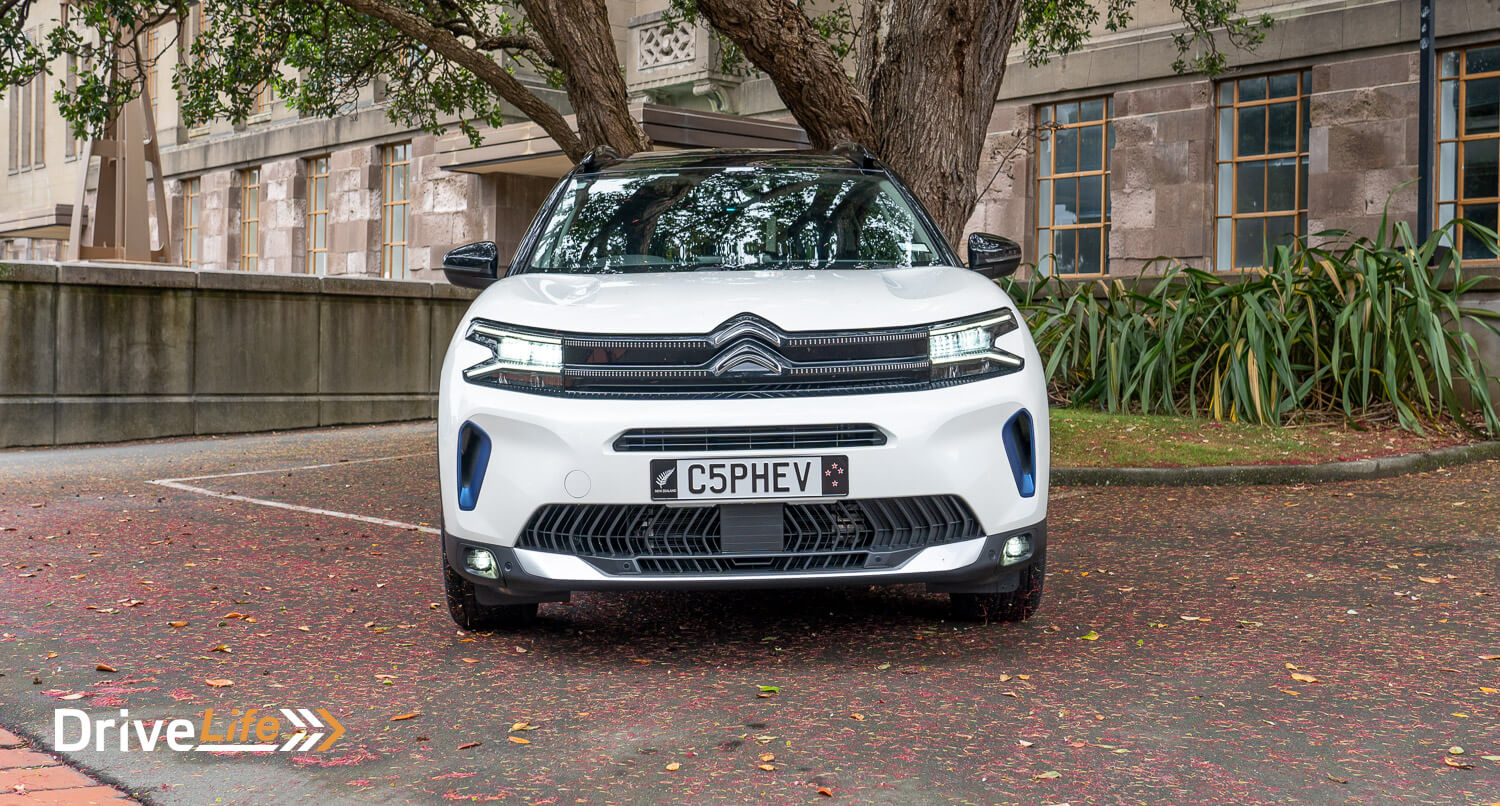
I left the car doing its own thing as far as hybrid mode goes today, as with a long trip, there’s no point forcing the car into EV mode. It’d simply run out after 60km or so. So instead I let the car control what it needed to do, and it works excellently. Set and forget it. Actually, you don’t even need to set it, just get in and drive.
The C5 PHEV, like so many other PHEVs, only does AC charging. What does this mean? You can’t plug it in at a public fast charger. Your options here are to plug it in at home (to a standard 230-volt wall socket) using the supplied home charger or get a more powerful wallbox installed. On holiday or away from home, you could take the 230-volt charger with you, but it’s going to take 6 hours or so to charge to full, so often not worthwhile unless there is a very convenient socket to plug into.
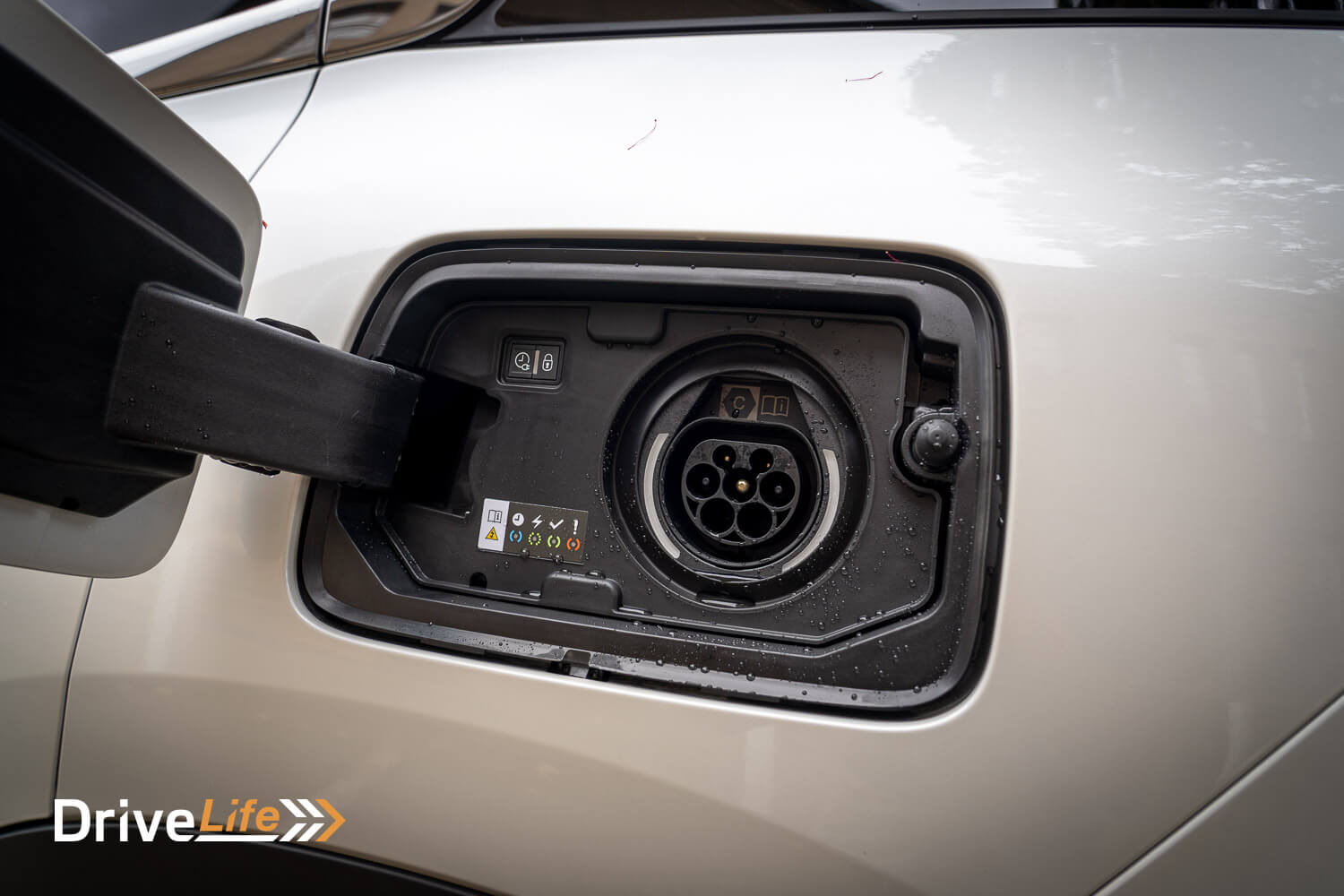
For the trip today, I used Apple CarPlay, as I prefer to use the Waze app for navigation. There’s a bit of a drawback here; the widescreen on the C5 PHEV is excellent with good clarity and quick response. On each side of the screen is a panel that allows you to adjust the temperature for that side of the car. This panel stays there all the time, so this adjustment is always at hand, which is nice. But the two panels really hog screen real estate, so when using CarPlay (or I expect, Android Auto) the available screen left for this is reduced quite a bit. Not a deal breaker, but it does take something away from that nice, wide screen.
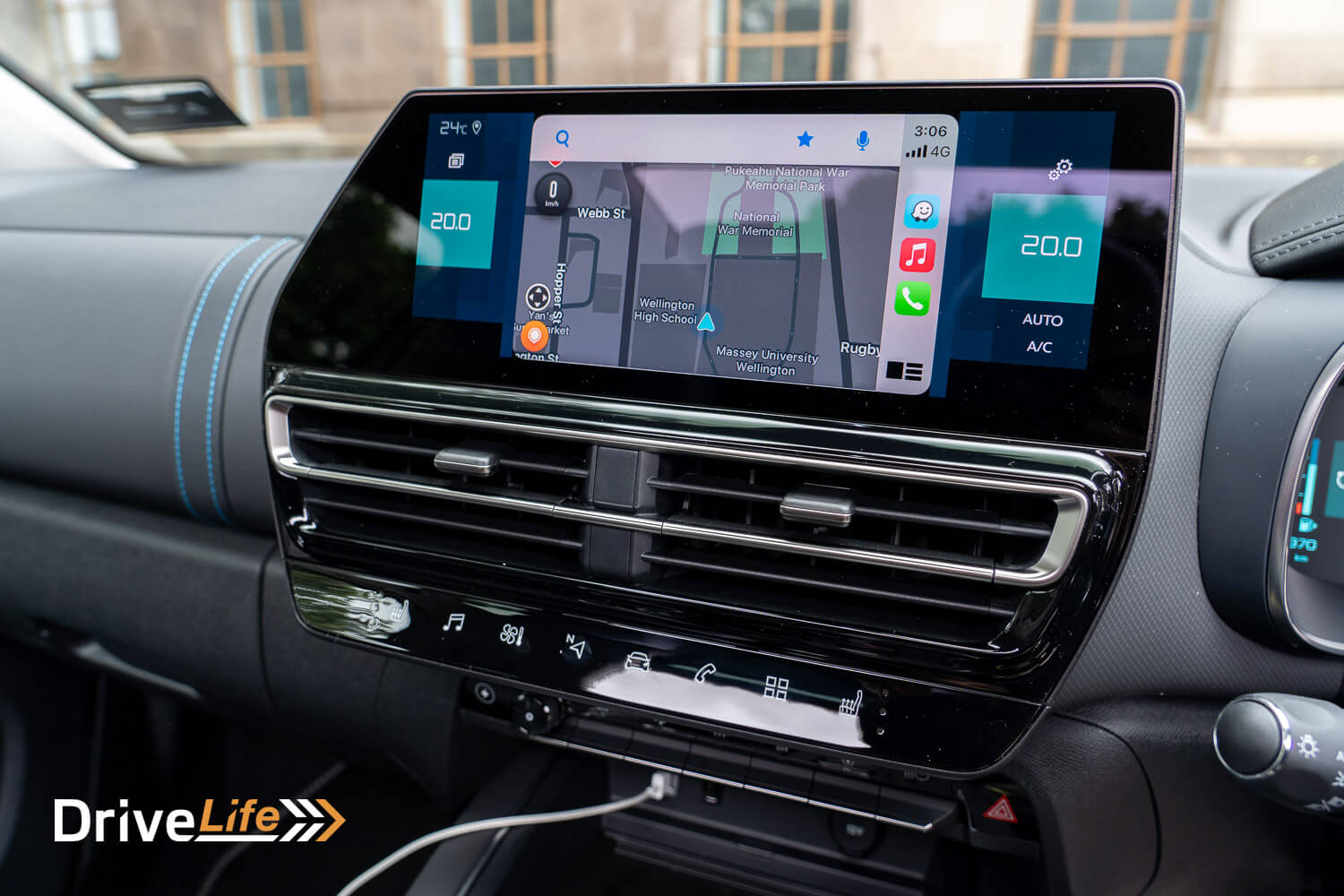
Audio quality is very reasonable in the C5 and will suit most ears. If there’s one drawback it’s that the car always reverts to the radio when you get back in the car. Let’s say you are using Bluetooth for your audio; when you get back in the car, it’s a 3-step process to get it back to Bluetooth. We’d drifted away from this happening for a few years, but it’s making a comeback over lots of brands. I’d love this issue to disappear forever.
The driver gets a clear digital dashboard with a few options to choose from, for display. At last, we have a car that not only has an arrow to show you which side to fill up for petrol, but also an arrow by the battery remaining to show you which side to plug in for charging up. I believe this is the first car I’ve reviewed that does this – yay!
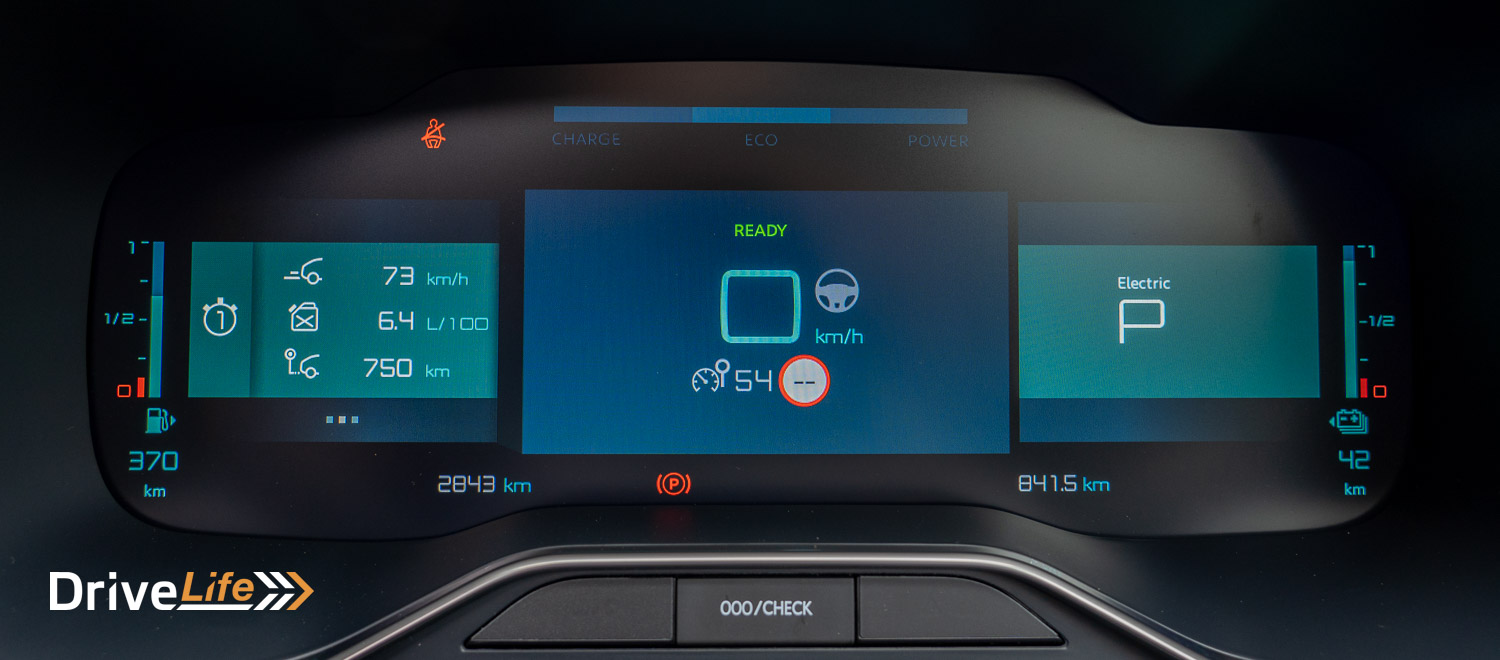
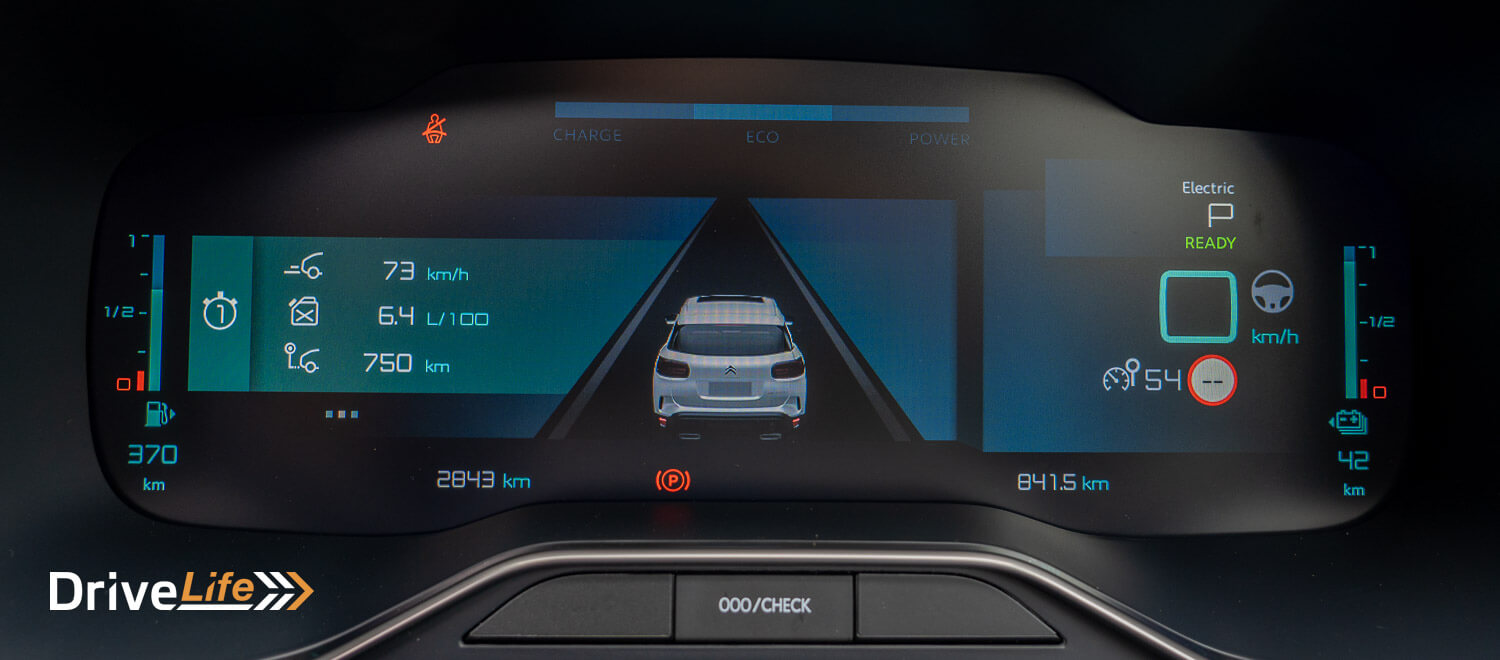
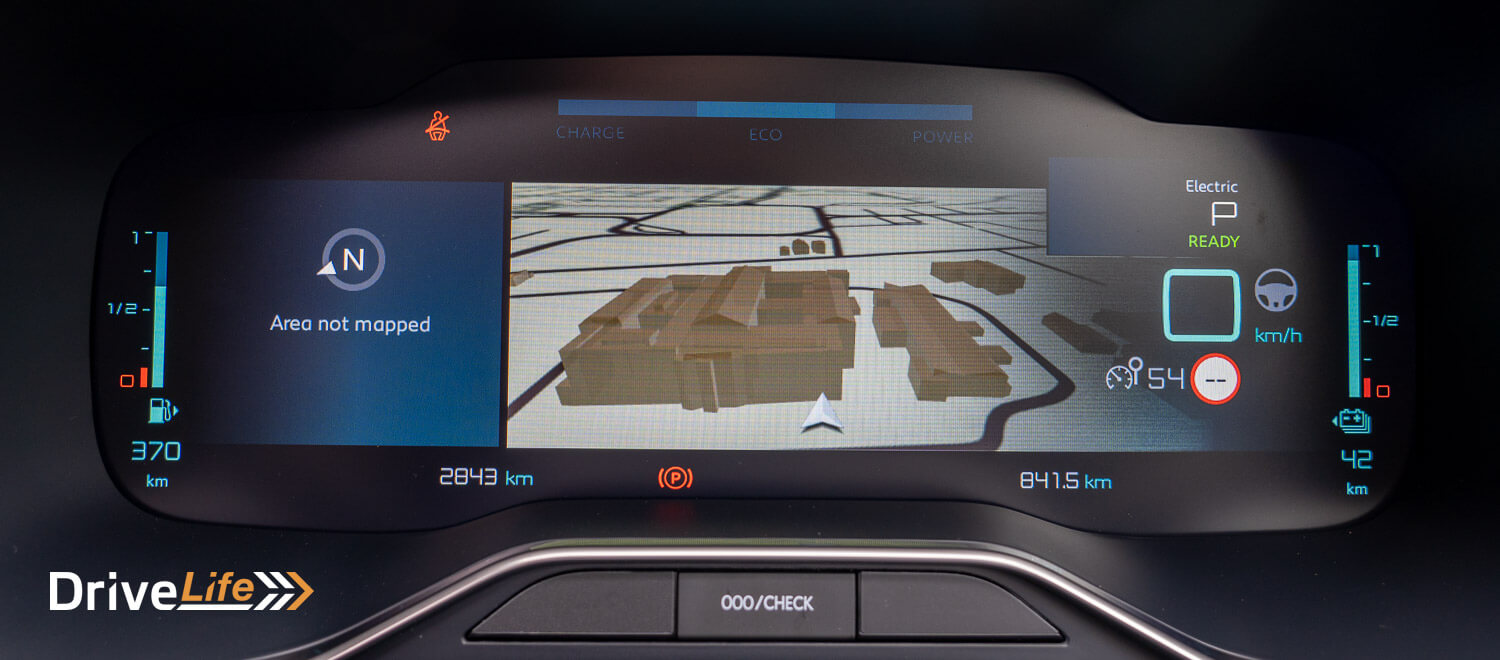
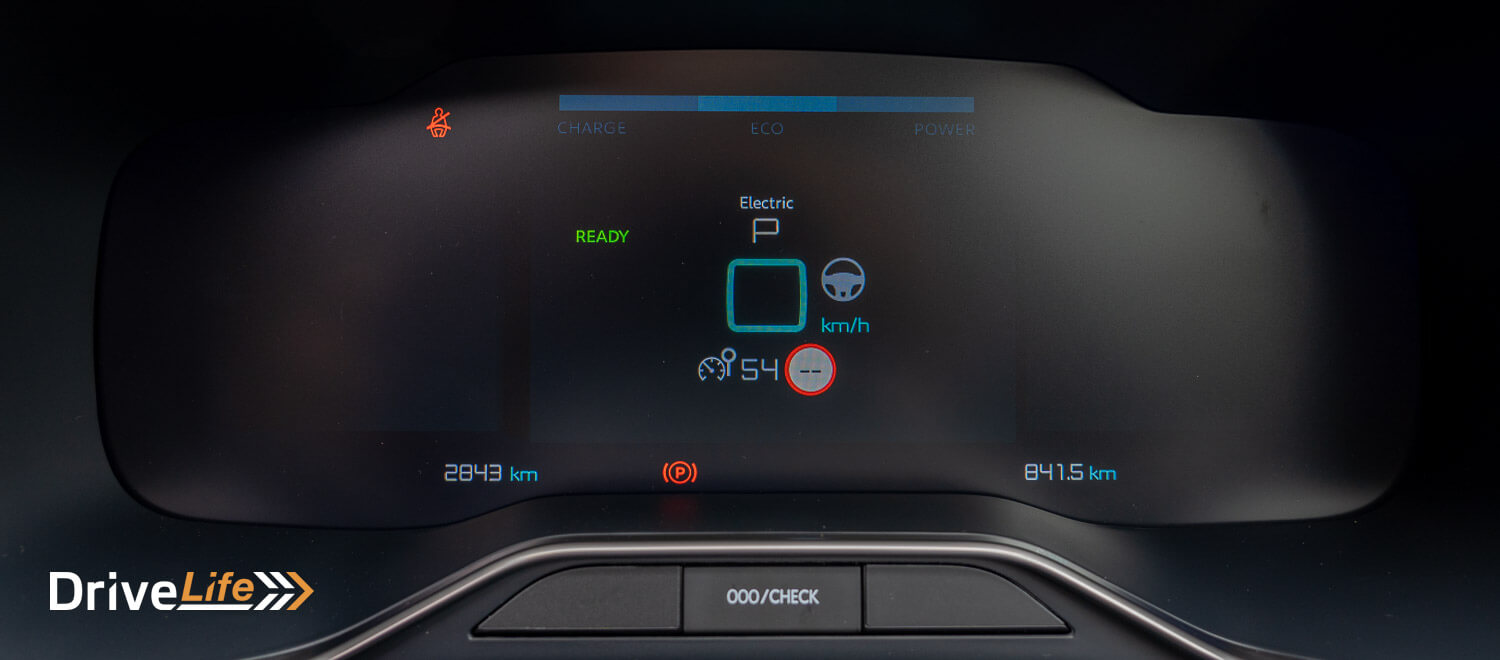
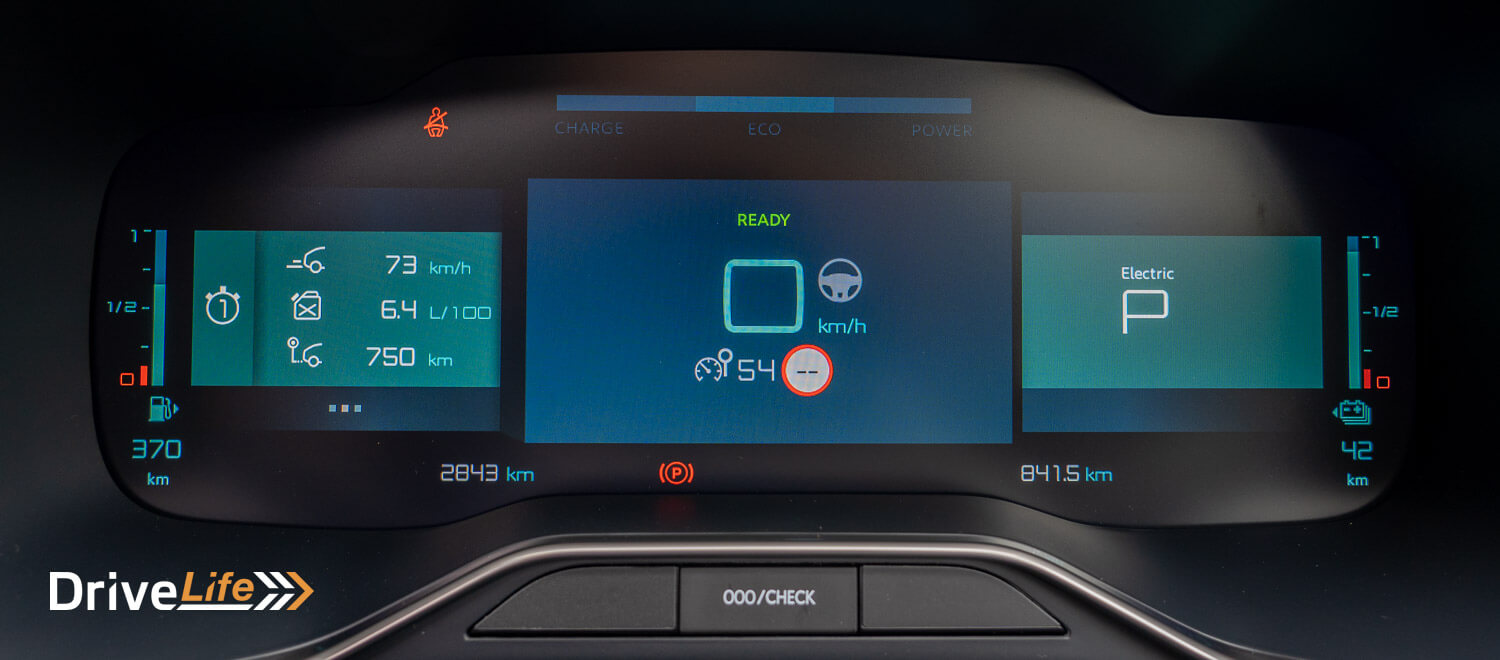
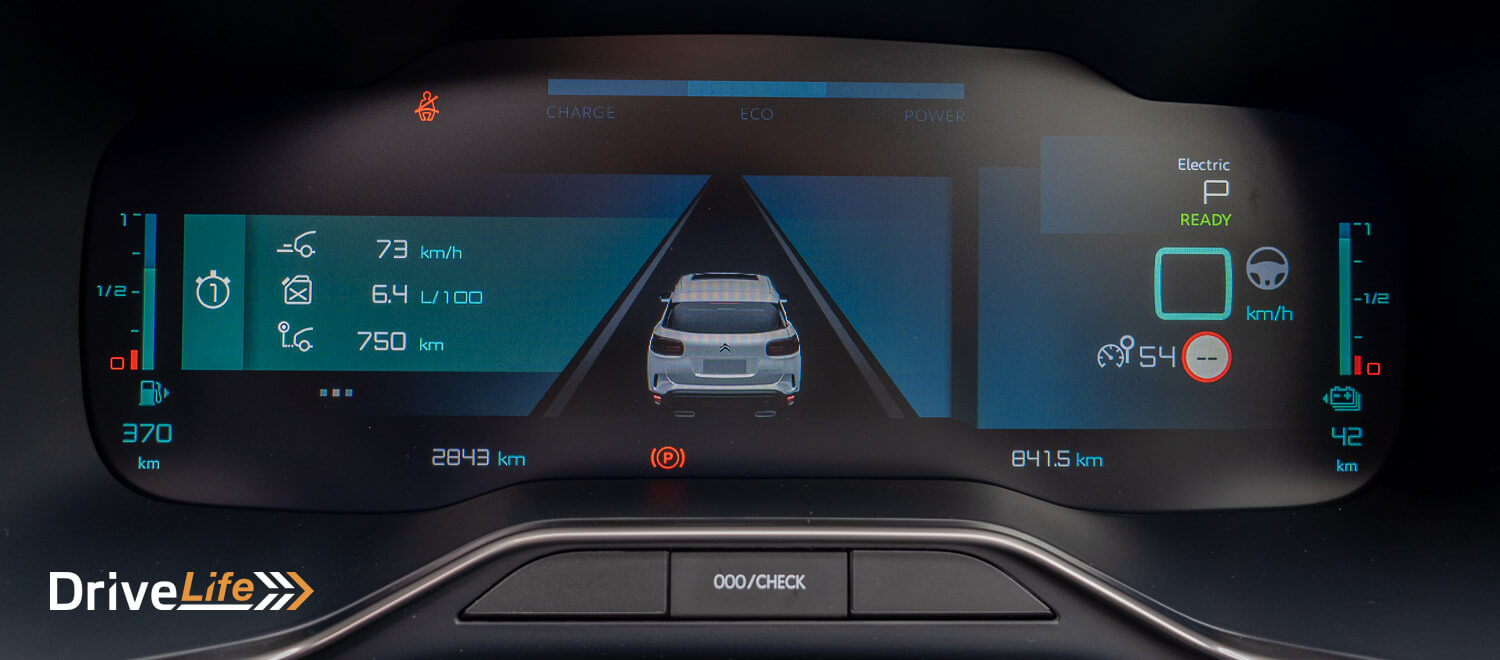
I had to go to Thames on the way home to Wellington, so used the Waze app to guide me back via the fastest route. This included narrow country lanes with no centre line, but good visibility, so time to test out the handling on the C5 PHEV. I wasn’t expecting much with the sublime floaty ride, but it does ok. There’s a reasonable amount of body roll, but the grip is good and there is a hint of steering feel coming through too. Overall, it’s a competent handling car.
A stop in Taihape for my first fuel-up, the C5 PHEV only takes 95 or higher octane fuel. Something to keep in mind.
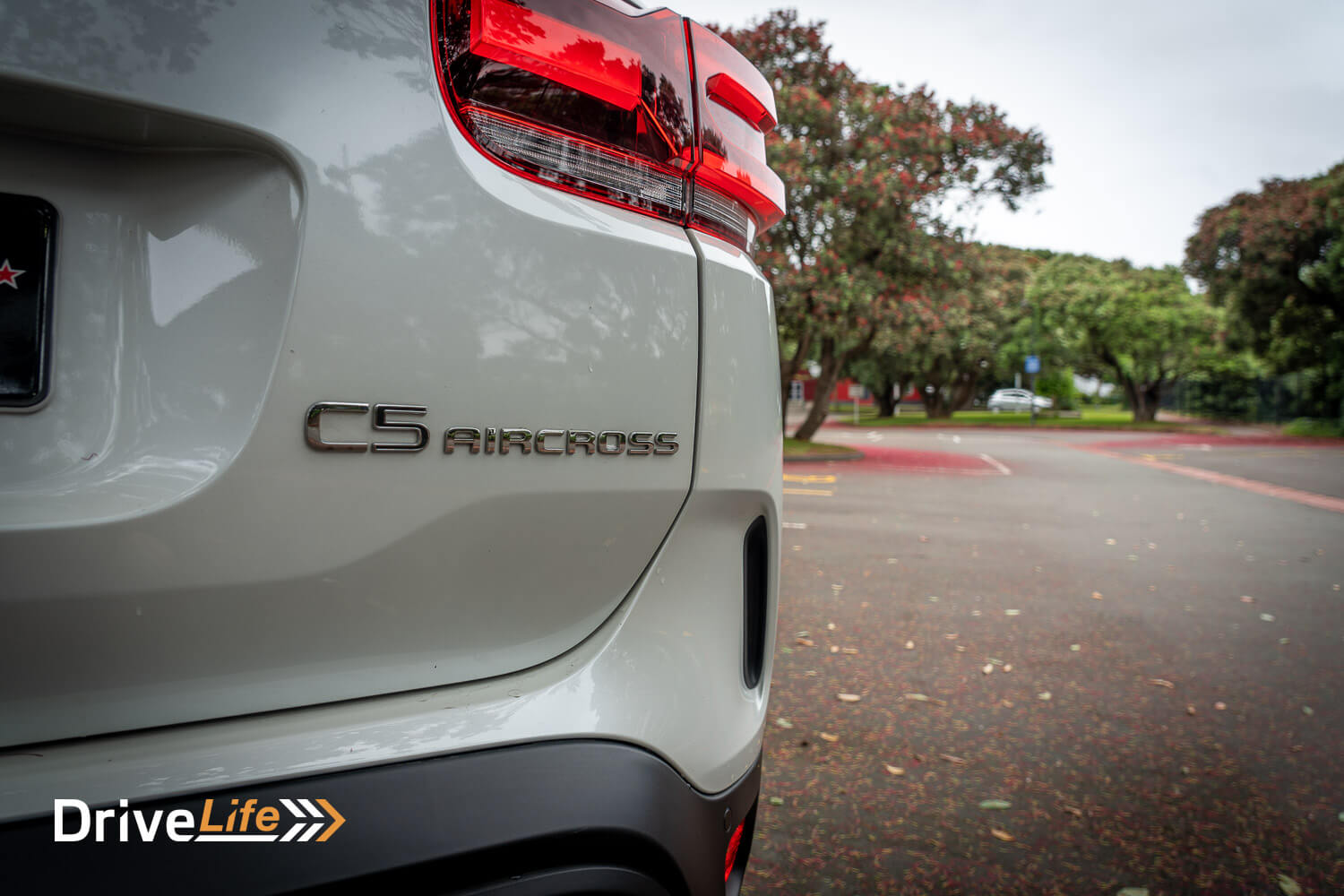
The self-steer feature works very well, Citroen calls it Lane Assist. Reliable, and not too forceful if you get too close to the fog line at the side of the road. It’s a lot more accurate than some self-steer systems I’ve tested lately.
Before we knew it, Wellington came up and we arrived back home. Those massaging seats, the decent Lane Assist and the adaptive cruise control meant that I wasn’t as tired as I could have been driving another car without those features. Fuel consumption on that Auckland-Wellington trip was an expected 6.4 litres/100km, and after another week of driving around and commuting, our overall fuel consumption over 1,000km was 5.2l/100km. That’s a long way from the claimed 1.8L/100km but a long trip with no charging on the way is always going to raise your consumption considerably.
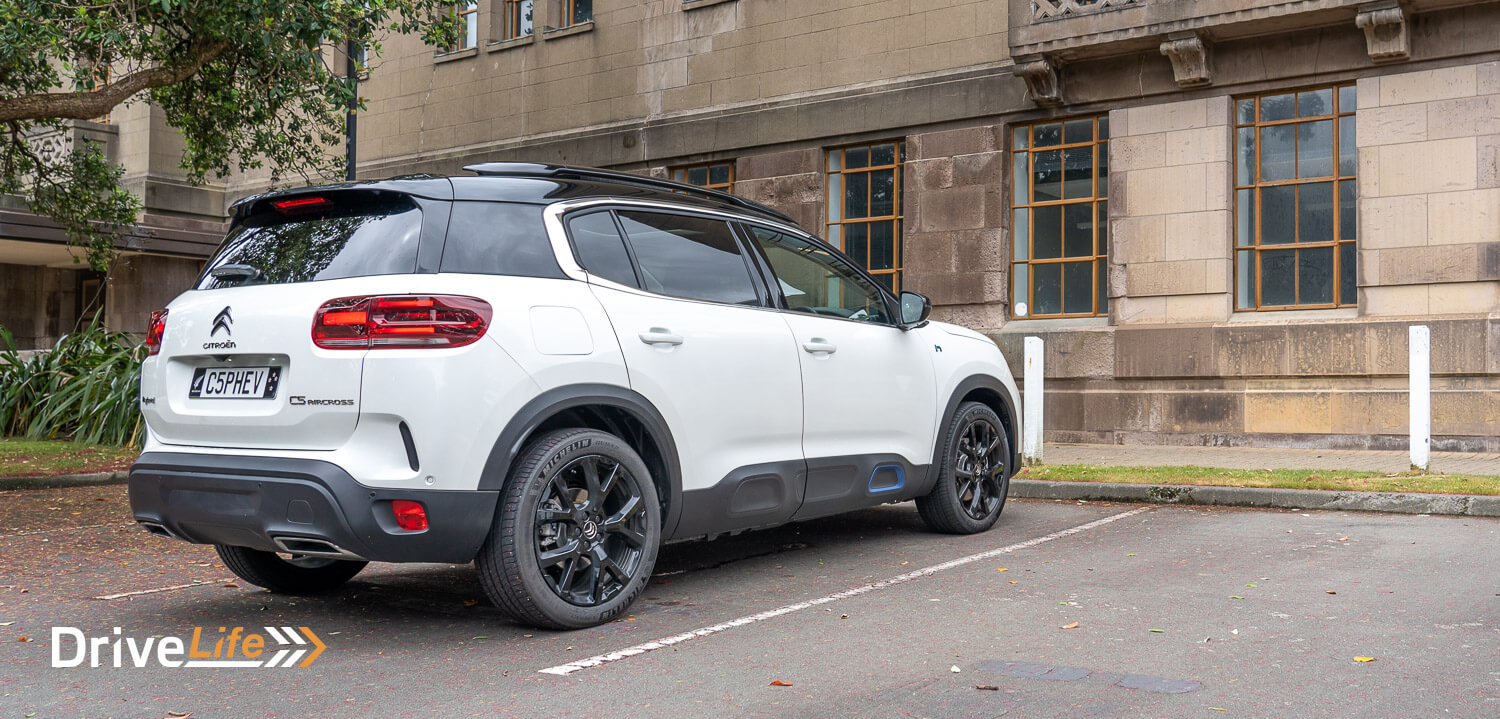
2022 Citroen C5 Aircross Shine Hybrid – Specifications
| Vehicle Type | 5-door, midsize, front-wheel drive, plugin-hybrid SUV |
| Starting Price | $79,990 |
| Price as Tested | $79,990 |
| Engine | 1.6-litre, 4-cylinder turbo-petrol with hybrid assist |
| Power, Torque kW/Nm (combined) | 165/360 |
| Transmission | 8-speed automatic |
| Spare Wheel | Pump only |
| Kerb Weight, Kg | 1,770 |
| Length x Width x Height mm | 4500x1969x1689 |
| Boot Space / Cargo Capacity, Litres (seats up/seats down) | 460/1,510 |
| Fuel tank capacity, litres | 43 |
| Fuel Economy, L/100km | Advertised Spec – Combined – 1.8 Real-World Test – Combined – 5.2 Low Usage: 0-6 / Medium Usage 6-12 / High Usage 12+ |
| Towing Capacity Kg, unbraked/braked | 750/1,300 |
| Turning circle metres | 10.7 Small: 6-10m / Medium 10-12m / Large 12m+ |
| Warranty | 5 Years, 100,000km Warranty 5 Years, 100,00km Roadside Assist 8-Year EV Battery Warranty |
| Safety information | ANCAP Rating – 4 stars – Link Rightcar.govt.nz – 4 Stars – C5PHEV |
Have you enjoyed this review? Be sure to join our monthly email newsletter list so you don’t miss a single car review!


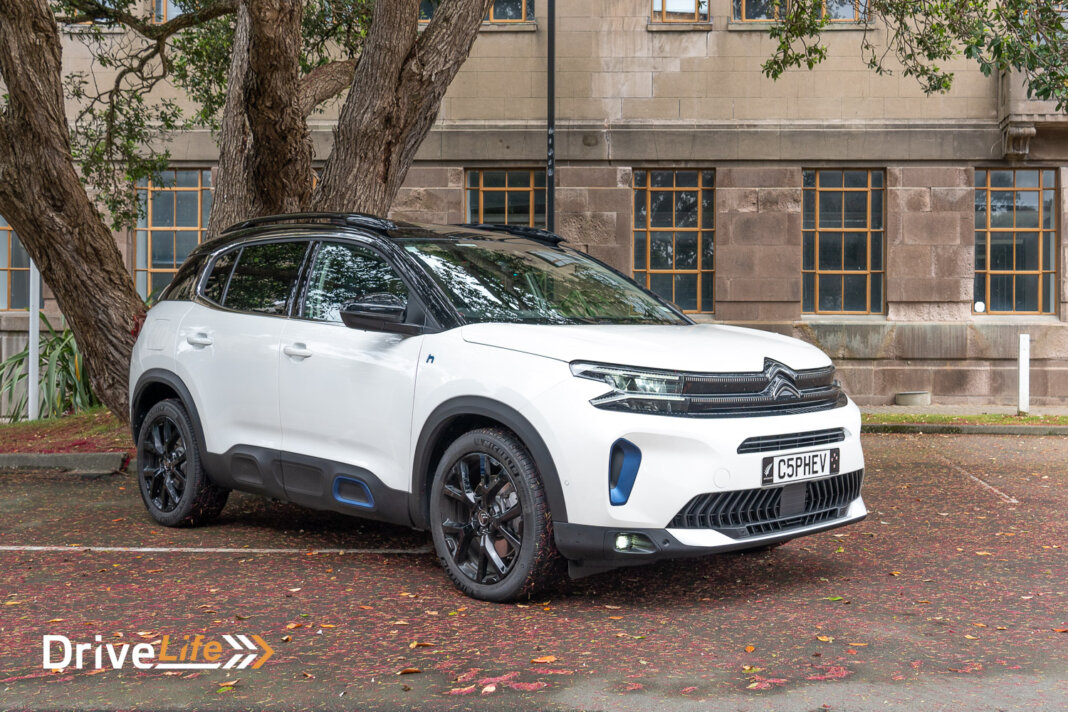






I tried both the hybrid and non-hybrid variants and settled on the non-hybrid. With over 300kgs less, it is actually marginally quicker with its 1.6 turbo as maximum torque comes in at only about 1,400rpm. Added to which, I personally preferred the lighter feel of the non-hybrid and gives me around 6.5l/100km on a open road run. The $21k price difference does get you an awful lot of dino juice and when the battery is flat, the phev uses more fuel due to the weight. If the price difference was smaller, the phev would be more tempting. Economy, lighter weight and decent acceleration of the non-phev C5 sealed it for me. Both decent vehicles however and soooo comfortable, smooth and quiet … even on coarse chip roads.
HI Nigel
Thanks for the comment. That’s interesting and totally agree about the cost. It’s a huge jump to move to any PHEV over its non-phev equal.